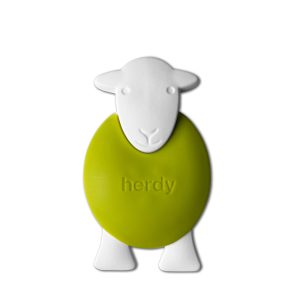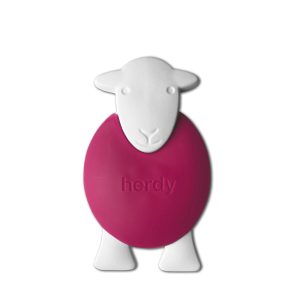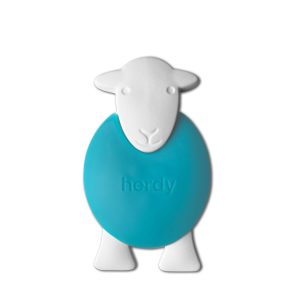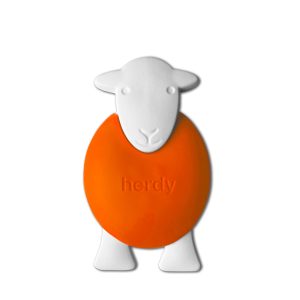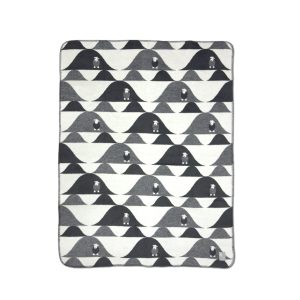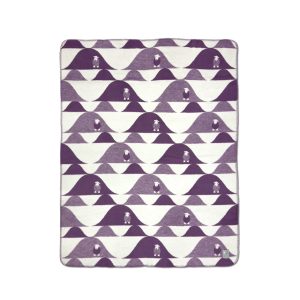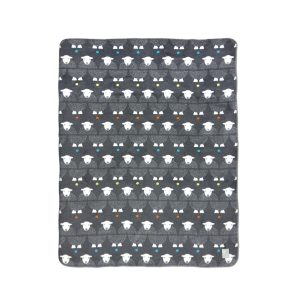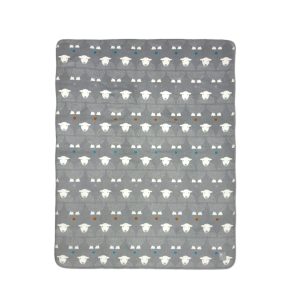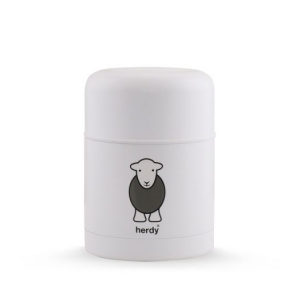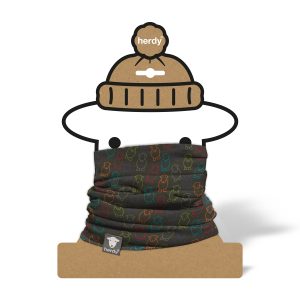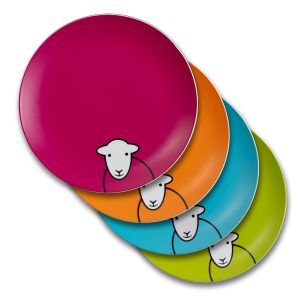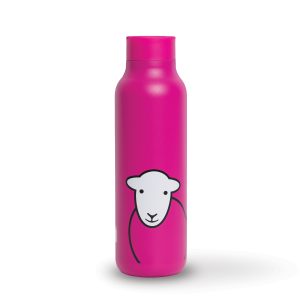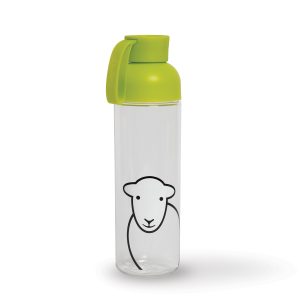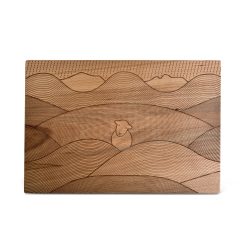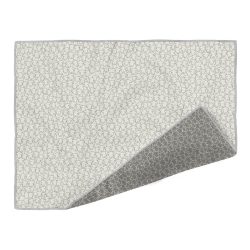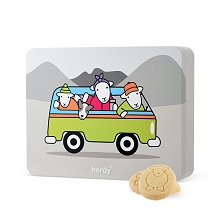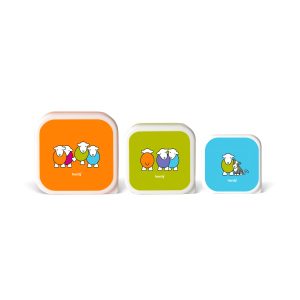There’s something magical about hitting the road with the windows down, the wind in your hair, and the promise of stunning scenery around every bend. If you’re ready to embrace the best of the Lake District from the comfort of your car (with a few gentle walks for good measure), we’ve put together a Herdy-approved road trip featuring five of the region’s most unforgettable viewpoints. Pack a flask, grab your camera, and let’s go!
Herdy's Top Activities
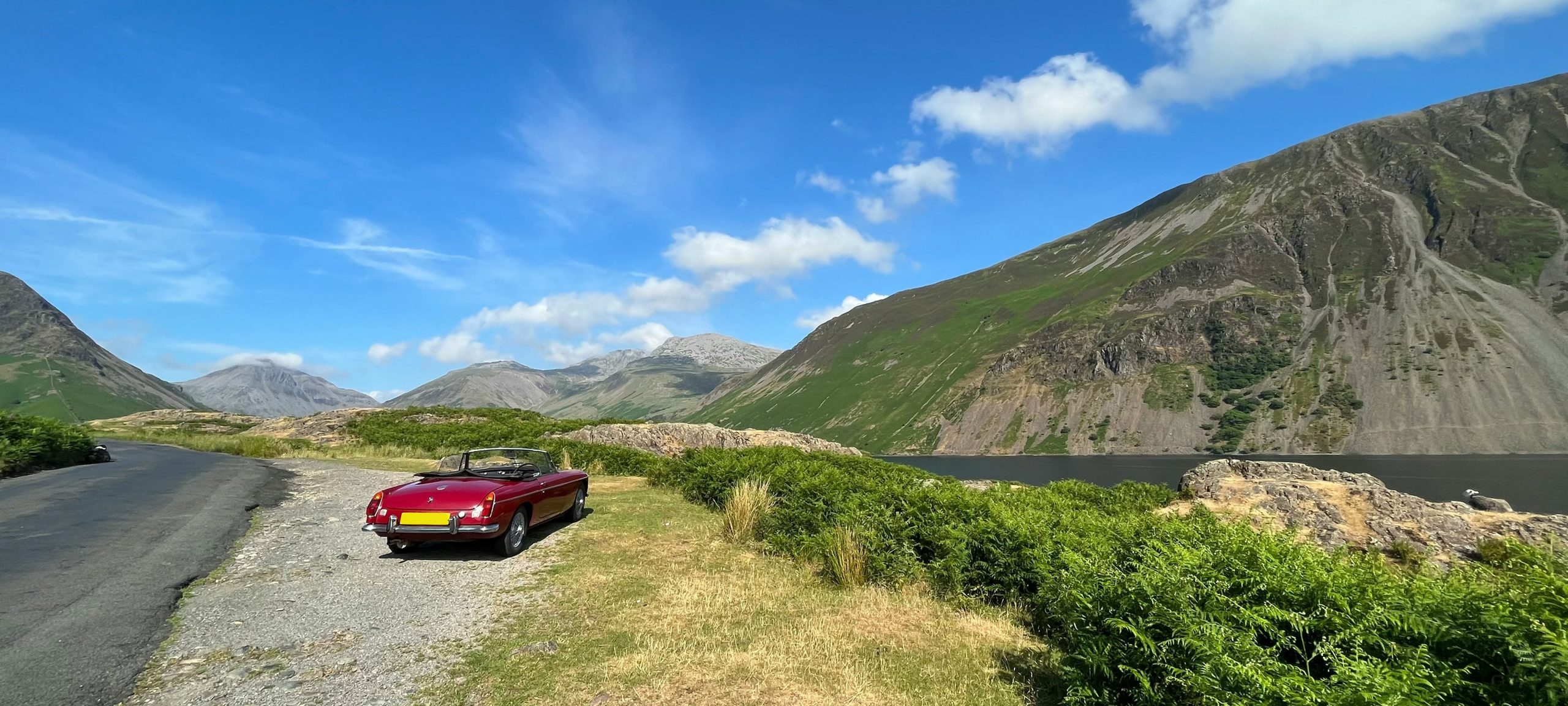
Photo Credit: Tom Smeeton, Unsplash
1. Ashness Bridge & Surprise View (near Keswick)
Start your adventure with a classic Lake District scene. Ashness Bridge, a charming little stone bridge spanning a babbling beck, is one of the most photographed spots in the Lakes — and for good reason. From here, you can enjoy sweeping views of Derwentwater and the surrounding fells. It’s postcard-perfect, and the drive there winds through some quintessential country lanes.
Parking: Ashness Bridge Car Park, CA12 5UB
what3words: ///fades.drifting.shack
If you want to stretch your legs, a short walk from the car park leads to Surprise View — aptly named for the jaw-dropping vista that unfolds as you turn the corner. It’s a great way to ease into your Lake District road trip and start ticking off those iconic views.
2. Kirkstone Pass & The Kirkstone Inn Viewpoint (near Ambleside)
Now it’s time to climb a little higher. Kirkstone Pass, the highest pass open to traffic in the Lake District, offers sweeping views of valleys, fells, and distant peaks. The winding road itself is part of the experience — every turn brings another reason to gasp.
Parking: Kirkstone Pass Car Park, LA22 9LQ
what3words: ///cheeks.crafts.signed
At the summit, the historic Kirkstone Inn awaits. As England’s third-highest pub, it’s a perfect spot for a coffee, a snack, or just a moment to admire the view. Whether you’re a seasoned road-tripper or just in it for the scenery, Kirkstone Pass delivers a dramatic vista that stays with you long after you’ve driven on
Photo Credit: George Hiles, Unsplash
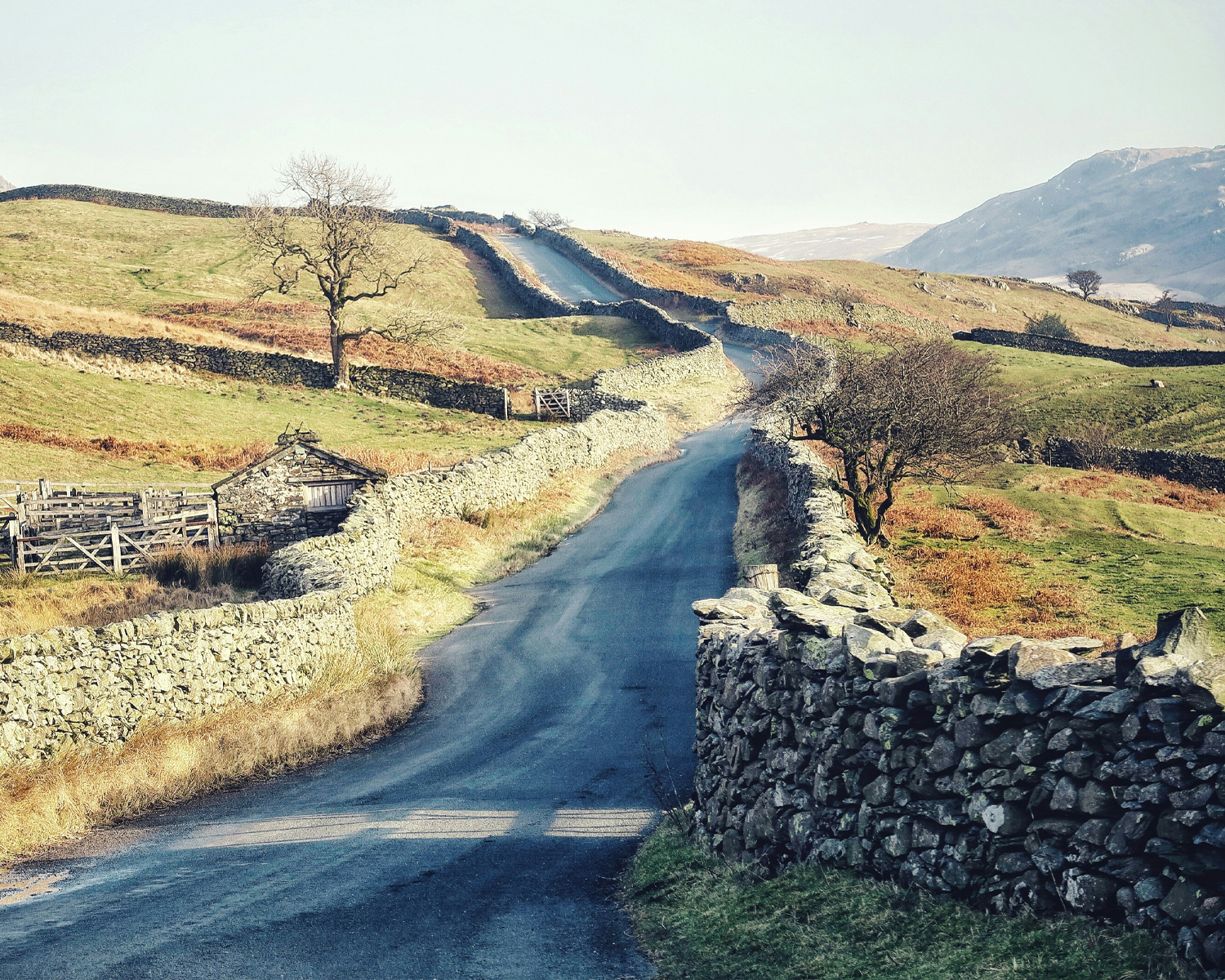
3. Honister Pass (between Borrowdale and Buttermere)
Next, get ready for a drive that’s as thrilling as it is beautiful. Honister Pass, slicing dramatically through the fells, offers panoramic views that will make you feel like you’re on top of the world. On one side, you have rugged mountain slopes; on the other, valleys that stretch as far as the eye can see.
Parking: Honister Slate Mine Car Park, CA12 5XN
what3words: ///rocky.repair.spot
Keep your camera at the ready — the slate mine viewpoint is perfect for photos. And if you fancy a little adventure, the slate mine offers guided tours, giving a glimpse into the Lake District’s industrial past.
4. Buttermere Lakeshore
By now, you’ll be craving a more tranquil stop, and Buttermere fits the bill perfectly. This serene lake, framed by towering fells, is famous for its mirror-like reflections — on a calm day, the mountains and sky seem to float on the water. The drive along the lakeshore is gentle and incredibly scenic, making it perfect for a leisurely spin with the windows down.
Parking: Gatesgarth Farm Car Park, CA13 9XA
what3words: ///shade.signed.truck
A stroll along the lakeshore is optional but highly recommended. There’s nothing quite like feeling the soft breeze off the water and taking in the calm, green surroundings.
5. Wastwater & Wasdale Head
Save the best for last. Wastwater, often called “Britain’s Favourite View,” is a soul-stirring combination of lake, mountains, and sky. With Scafell Pike, Great Gable, and Lingmell towering above the deep blue water, it’s the ultimate Lake District showstopper.
Parking: Wasdale Head Car Park, CA20 1EX
what3words: ///bumpy.extend.dragon
The road here is quieter than the other stops, giving you a sense of solitude and space. A gentle walk along the lakeshore is highly recommended — there’s something meditative about the stillness, the reflections, and the sheer grandeur of the surrounding peaks. This is the perfect place to end your Herdy road trip, with the kind of view that makes every mile of driving worthwhile
Photo Credit: Jonny Gios, Unsplash
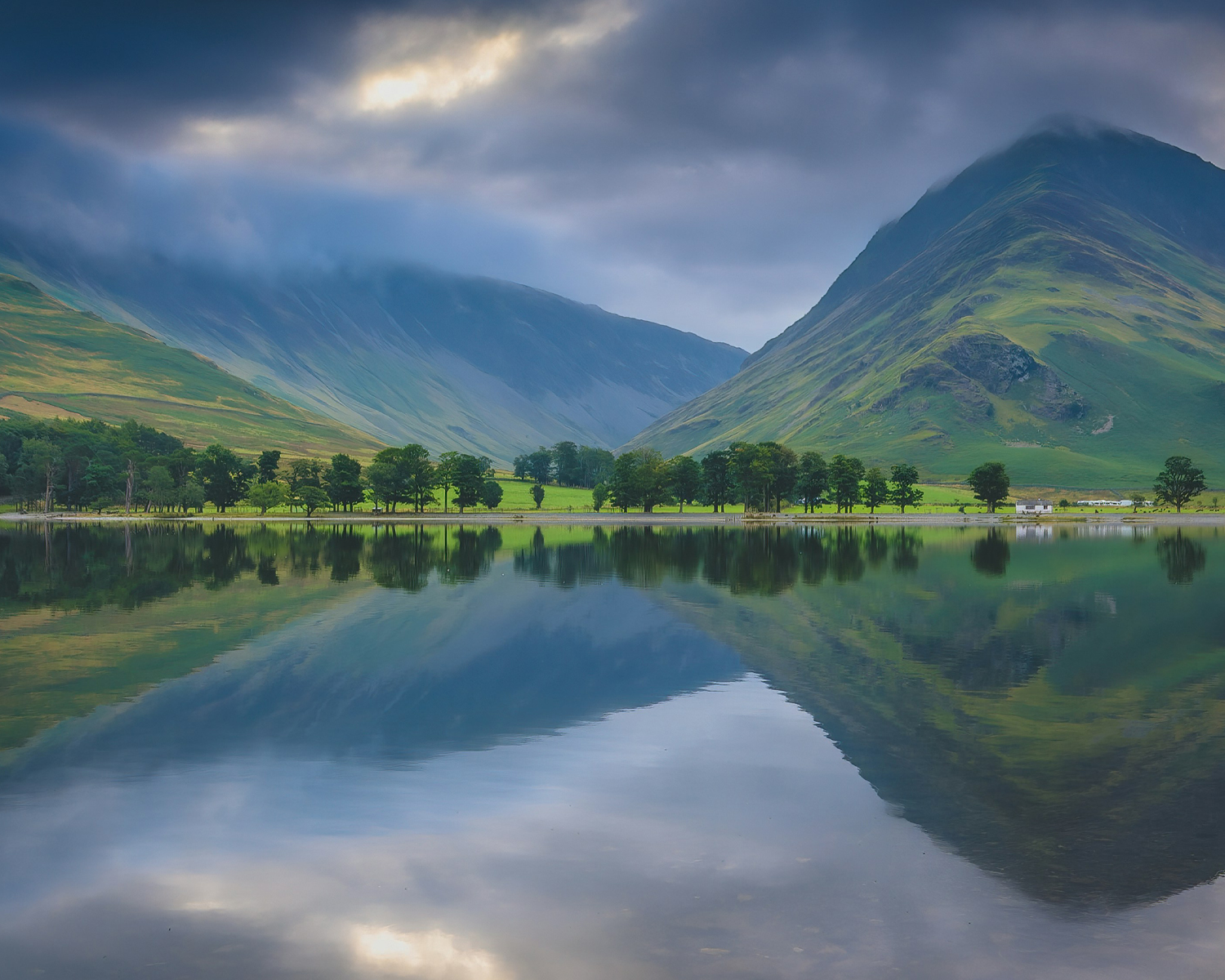
Five stops, five unforgettable views, and a whole lot of Lake District magic. Whether you’re chasing postcard-perfect photos, dramatic mountain passes, or serene lakeside reflections, this road trip has a little bit of everything. It’s a celebration of the Lakes in all its moods — wild, calm, and breathtaking.
So, fill up your tank, roll down the windows, and let the Herdy spirit guide you to these incredible vistas. Happy driving!
Featured Products
Herdy Car Fragrance
The Lake’s are famous for many things – Wordsworth, Gingerbread, Beatrix Potter, but its most iconic resident is the Herdwick sheep. Hardy, characterful, and utterly at home in the fells, Herdwicks can be seen across the Lakes throughout the year. Late summer, especially August and September, is a particularly magical time to spot them.
Here are our top 5 summer walks where you can enjoy Herdwick-spotting while taking in some of the most beautiful landscapes the Lakes has to offer.
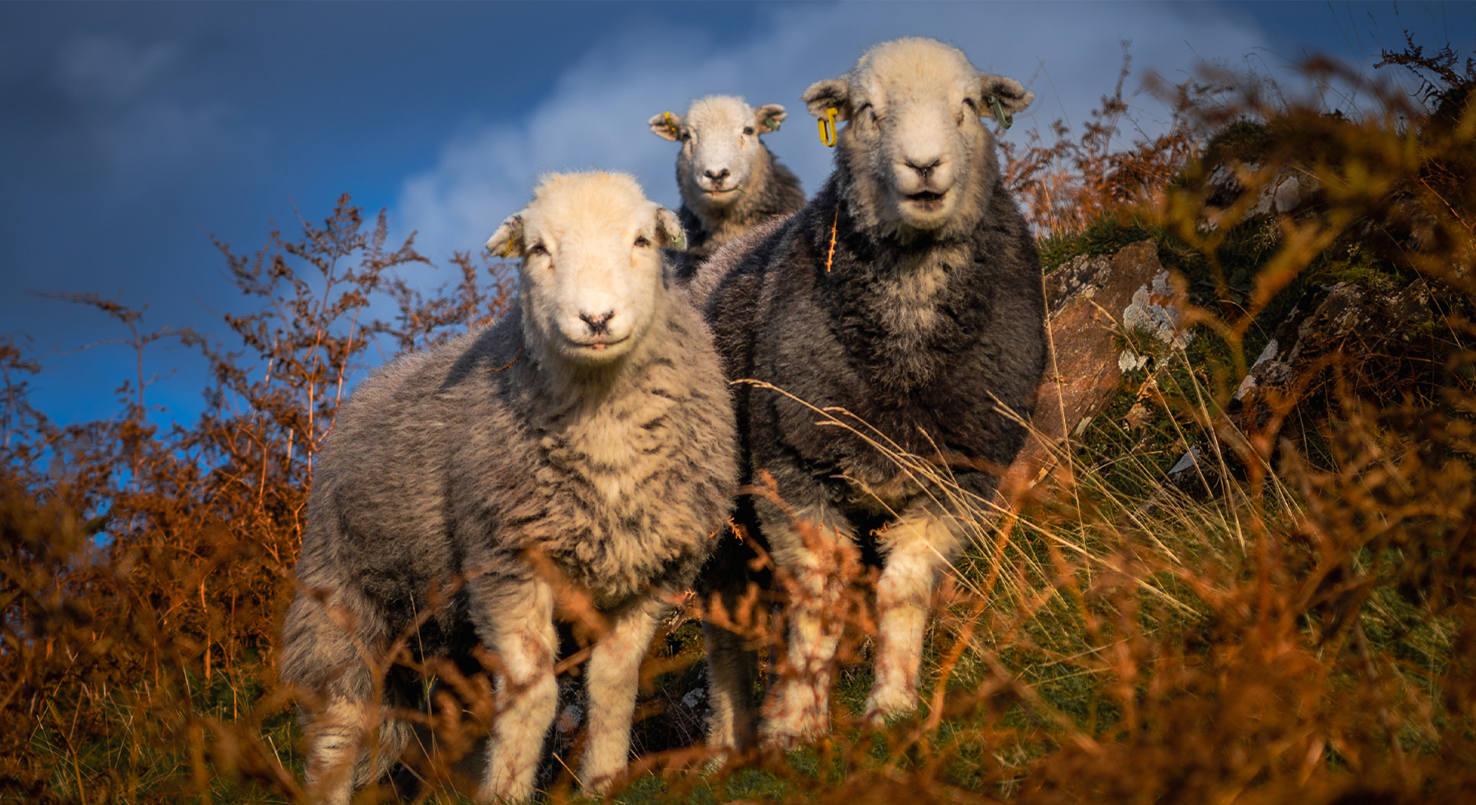
Walk 1: Catbells Ridge Walk (Moderate)
If you’re looking for a short but rewarding adventure, Catbells is one of the most popular and photogenic walks in the Lake District. The ridge overlooks Derwentwater, offering views across to Keswick and the Northern Fells. Herdwicks can often be seen grazing the lower slopes and meadows, perfectly framed against dry-stone walls and patchwork fields. Despite being a manageable climb, the summit still feels like a big achievement.
- Distance & Time: 3.5 miles, around 2–3 hours
- Parking: Limited parking at Hawes End or Skelgill; best to arrive early. Alternatively, hop on the Keswick Launch boat across Derwentwater for a car-free option.
Reward after the ramble: Wander into Keswick for a post-walk treat. The Dog & Gun is beloved for its hearty meals, while The Wild Strawberry serves up brilliant coffee and cakes.
Your nearest Herdy store: Keswick
Walk 2: Grasmere to Easedale Tarn (Easy–Moderate)
This route starts in the village of Grasmere and winds its way through farmland before climbing steadily into Easedale Valley. Along the way, you’ll pass Sourmilk Gill waterfall, which tumbles down the fellside, before arriving at the crystal-clear waters of Easedale Tarn. Herdwicks are often spotted grazing the grassy slopes here, a reminder of Beatrix Potter’s enduring influence; she once owned farms in this very valley to help preserve the breed.
- Distance & Time: 6 miles, 3–4 hours
- Parking: Grasmere village car park (Broadgate) has plenty of spaces, toilets, and is an easy starting point.
Reward after the ramble: No trip to Grasmere is complete without sampling Sarah Nelson’s world-famous gingerbread. Or, pop into Baldry’s Tea Room for a traditional cream tea.
Your nearest Herdy store: Grasmere
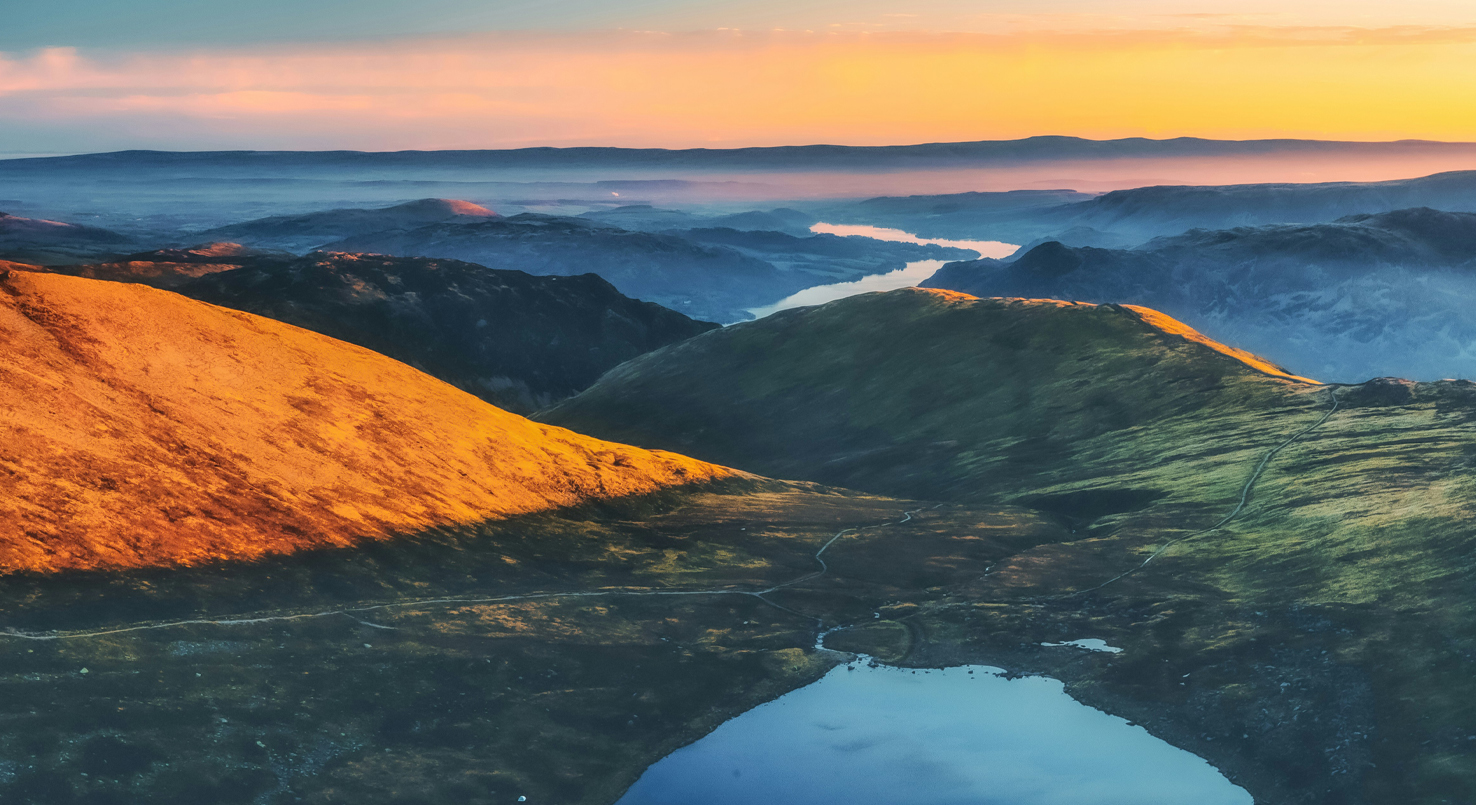
Walk 3: Helvellyn via Thirlmere (Challenging)
Helvellyn is a mountain that never fails to impress, and tackling it via Thirlmere offers a quieter but equally dramatic ascent. This demanding hike takes you through shaded woodland paths before opening out onto rugged ridges where Herdwicks roam freely, often perching on what looks like impossibly steep ground. The climb is long and steady, but the reward is one of the most breathtaking views in the whole of the Lakes – from Ullswater in the east to the Solway Firth in the north-west.
- Distance & Time: 11 miles, 6–7 hours
- Parking: Swirls Car Park on the A591 is the best base for this ascent.
Reward after the ramble: A long day in the fells deserves a hearty finish. The King’s Head Inn at Thirlmere offers generous portions, local ales, and a cosy atmosphere.
Your nearest Herdy store: Keswick
Walk 4: Tarn Hows Circular (Easy)
Tarn Hows is one of the Lake District’s most beloved beauty spots, and for good reason. This gentle circular route is ideal for families, with wide, well-maintained paths that are pushchair and wheelchair friendly. In summer, the surrounding woodlands are alive with birdsong, while the open fields often host grazing Herdwicks. Once owned by Beatrix Potter and gifted to the National Trust, Tarn Hows is a place steeped in history as well as beauty.
- Distance & Time: 2 miles, around 1 hour
- Parking: National Trust Tarn Hows Car Park (charges apply, free for NT members).
Reward after the ramble: Take a short drive into Coniston village and enjoy an ice cream at The Green Housekeeper Café, or head to The Black Bull Inn for a pint of local bitter.
Your nearest Herdy store: Ambleside
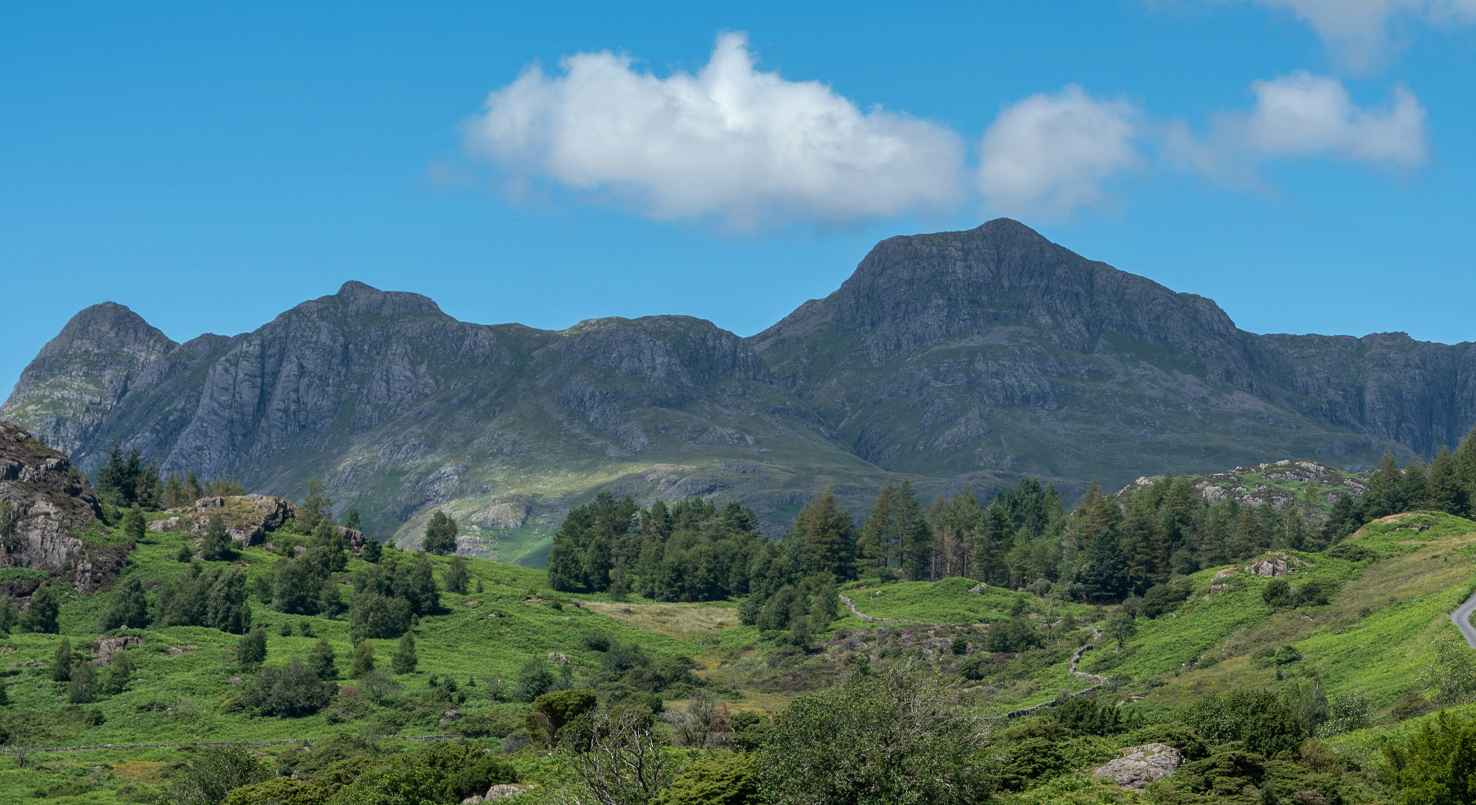
Walk 5: Langdale Pikes from Stickle Ghyll (Moderate–Challenging)
The Langdale Valley is a walker’s paradise, framed by some of the most dramatic peaks in the Lakes. This route climbs alongside Stickle Ghyll, where waterfalls and cool rock pools make the ascent exciting from the start. As you climb higher towards Stickle Tarn, the Langdale Pikes rise into view, their rugged summits dominating the skyline. Herdwicks are a common sight along this route, often grazing on slopes that seem impossible to reach. In August and September, the valley bursts with colour as heather carpets the fellside, creating a striking backdrop for spotting Herdwicks.
- Distance & Time: 4.5 miles, 3–4 hours
- Parking: Sticklebarn National Trust Car Park, right by the start of the trail.
Reward after the ramble: End your day with a pint or a hearty meal at The Sticklebarn, perfectly placed next to the car park and surrounded by views of the valley.
Your nearest Herdy store: Grasmere
A Final Note
Remember to always check the weather before you venture out into The Lakes.
The Lake District Weatherline provides daily updates to help you plan your trip safely. Even in summer, conditions can change quickly, so make sure you have a route suited to your ability, carry the right kit, and always respect the Herdwicks and their farmland.
Please conduct your own research before setting out on any of these listed walks.
Photo Credit: Jonny Gios
Your Very Own Herdwick!
The Lake District is a magical mix of stunning scenery, charming towns, and endless adventures. Whether you're after thrilling hikes, relaxing boat rides, or something a little out of the ordinary, there's something here for everyone. And don’t worry, we’ve got you covered for the (inevitable) rainy days too!
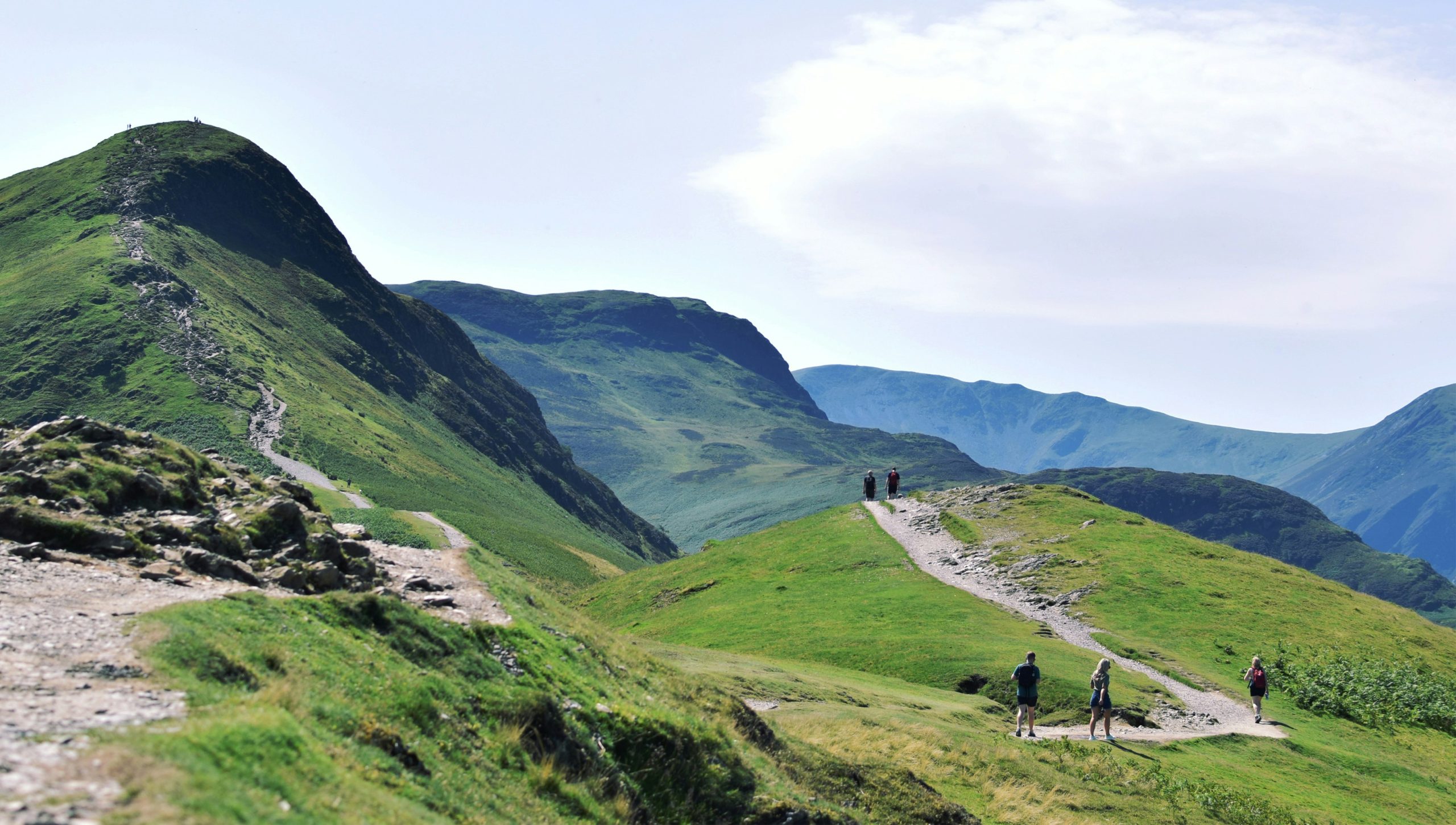
So grab your sunnies and your wellies (it’s the Lake District, after all), and let’s go!
1. Set Sail on Lake Windermere
What’s more Lakeland than cruising across Windermere? Hop on a Windermere Lake Cruises steamer for unbeatable views of the fells, forests, and fabulous waterside homes. Feeling adventurous? Hire a kayak or paddleboard for a splashy adventure.
Book at: windermere-lakecruises.co.uk
2. Wordsworth Wanders in Grasmere
Take a stroll in the poetic footsteps of William Wordsworth. Start at Dove Cottage, his former home, and explore the Wordsworth Museum for a glimpse into his life and inspiration. Feeling peckish? Pop into Sarah Nelson’s for some famous Grasmere Gingerbread (just try not to eat it all at once).
Book at: wordsworth.org.uk
3. Climb Catbells in Keswick
This little gem of a fell offers big views over Derwentwater without the big effort. At 451m high, Catbells is a manageable yet rewarding climb, making it ideal for families, beginners, and even your four-legged friends. The route combines a bit of hands-on scrambling for an added sense of adventure with steady paths that lead to breathtaking panoramas.
Walking Route: Visit Keswick
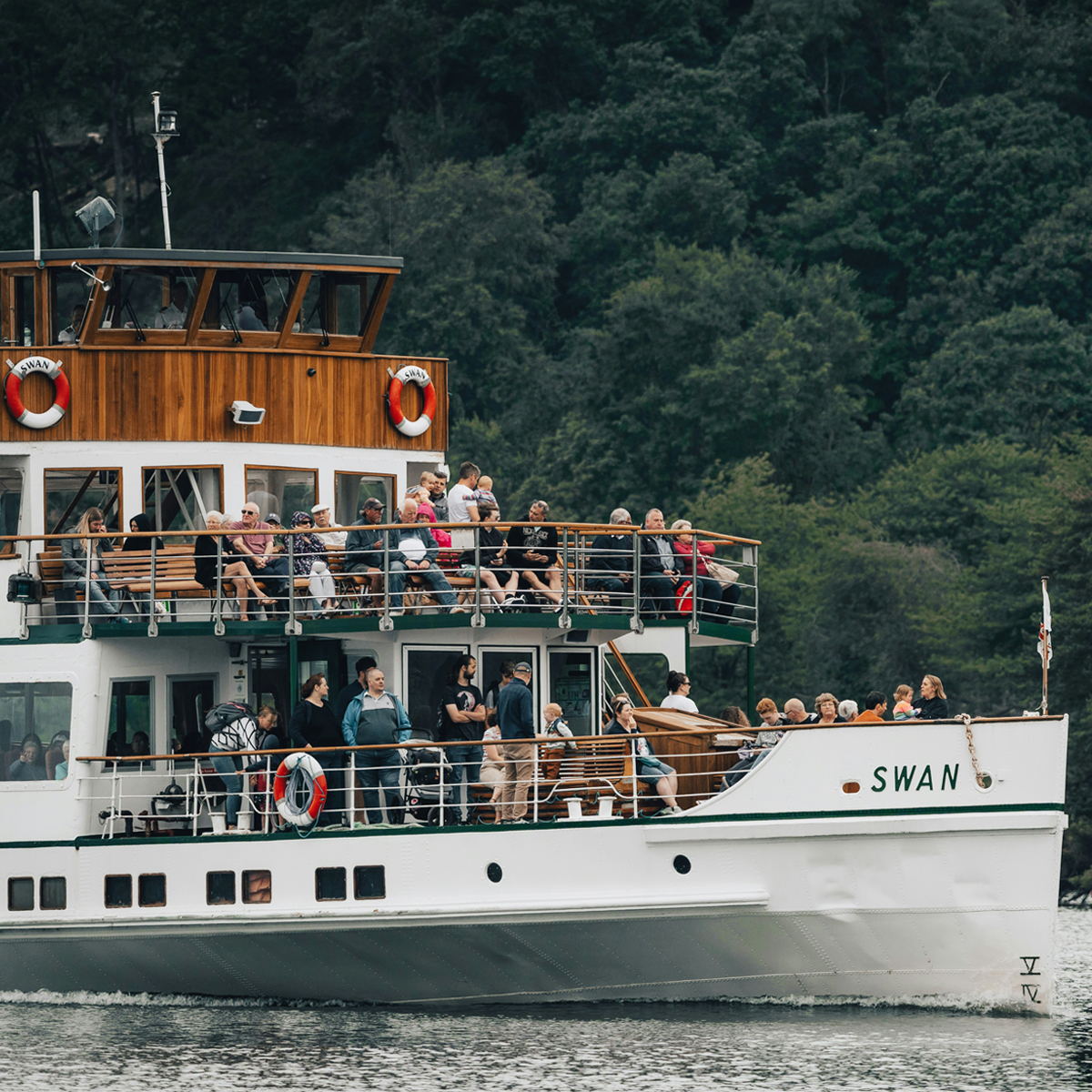
4. Explore Kendal’s Crafty Side
Did you know Kendal’s full of crafty surprises? Check out the Quaker Tapestry Museum for beautiful and thought-provoking embroidery or head to the Abbot Hall Art Gallery to soak up some Lakeland creativity. Both are perfect rainy-day escapes.
Book tickets at: quaker-tapestry.co.uk | lakelandarts.org.uk

5. Discover the Lakes Aquarium
Rain or shine, the Lakes Aquarium offers a deep dive into underwater worlds. Marvel at native species like Otters and Thornback Rays or meet some tropical creatures for a splash of colour. Perfect for families and wildlife lovers.
Book at: lakesaquarium.co.uk
6. Go Ghyll Scrambling in Ambleside
Want to feel like a Herdwick jumping through streams? Ghyll scrambling (aka canyoning) is a wet and wild adventure where you’ll clamber up waterfalls and splash through rock pools. Book with Ambleside Adventures or Lakeland Ascents to get your heart racing (safely of course).
Book at: amblesideadventures.co.uk | lakelandascents.co.uk
7. Step Back in Time at Kendal Castle
Explore the atmospheric ruins of Kendal Castle and enjoy panoramic views of the town and countryside. This one’s free to explore and perfect for a picnic on a sunny day. Want a deeper dive into Kendal’s history? Download a self-guided trail map from Kendal Tourist Information Centre.
More information: visit-kendal.co.uk
8. Enjoy Boutique Shopping
Fancy a bit of retail therapy? Wander through the charming shops of the Lake District's many towns and villages, where you’ll find handmade pottery, artisan jewellery and lots of locally made tasty treats around every corner. Be sure to pop into the Herdy Shop for some goodies—perfect for gifting (and keeping).
Details at: herdy.co.uk
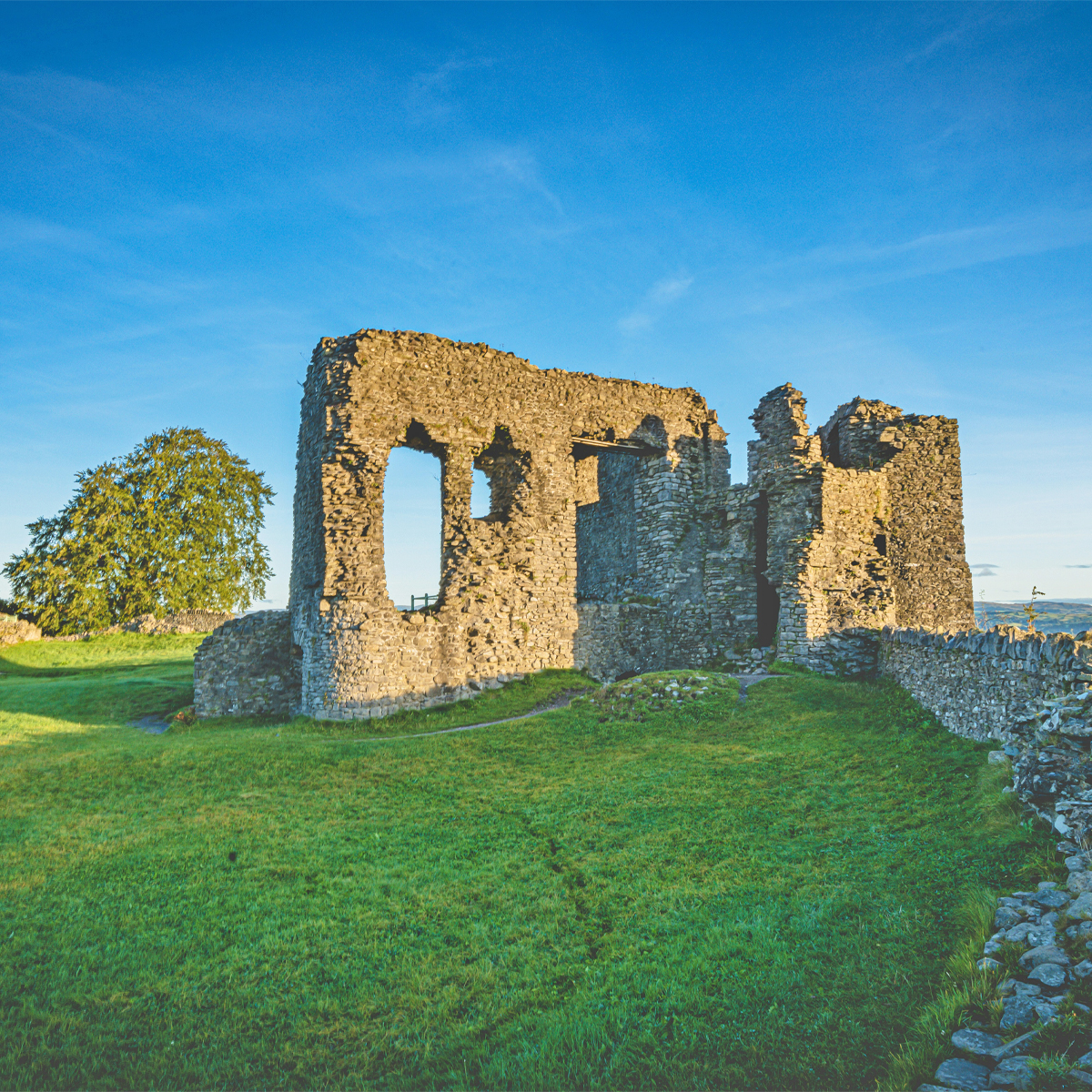
9. Join the Herdwick Experience
Get up close with the Lake District’s fluffiest icons on the Herdwick Experience at Yew Tree Farm near Coniston. You’ll meet these hardy sheep, learn about their ewe-nique qualities, and hear how they helped shape the Lakeland fells.
Book at: yewtree-farm.com
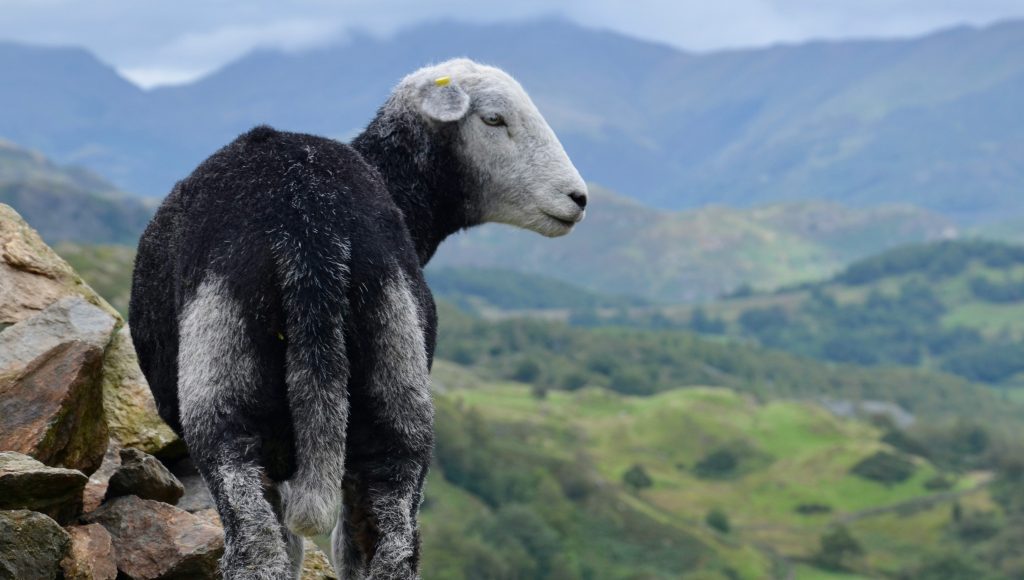
10. Chill Out in Hope Park, Keswick
Need a breather? Hope Park is perfect for relaxing with an ice cream or getting competitive over mini-golf. For a cultural twist, head next door to the Theatre by the Lake for an evening of storytelling with a stunning backdrop.
Tickets at: theatrebythelake.com
Herdy’s Top Tips for Respecting the Lakes
The Lake District is a very special place, and we all need to play our part in keeping it that way:
- 🐑 Ditch disposable BBQs: They’re baa-d for the environment and wildlife. Pack a picnic instead!
- 🚗 Park politely: Use designated car parks and avoid blocking lanes or gates and leave plenty of room for emergency vehicles.
- ♻️ Take your rubbish home: Or find your nearest recycling bins. Let’s keep the Lakes litter-free.
- 🥾 Stick to paths: Help protect delicate flora and avoid disturbing wildlife.
💚 Shop local: Support small businesses, farmers, and artisans to keep our communities thriving.
With so much to see and do, the Lake District promises an unforgettable summer for all ages and interests. What’s first on your list?
The Lake District is a walker’s paradise, especially for those eager to explore its iconic fells. If you’re new to fell walking, especially in the winter months, starting with easier routes is key. Our guide highlights Herdy’s favourite fell walks perfect for first timers and families.
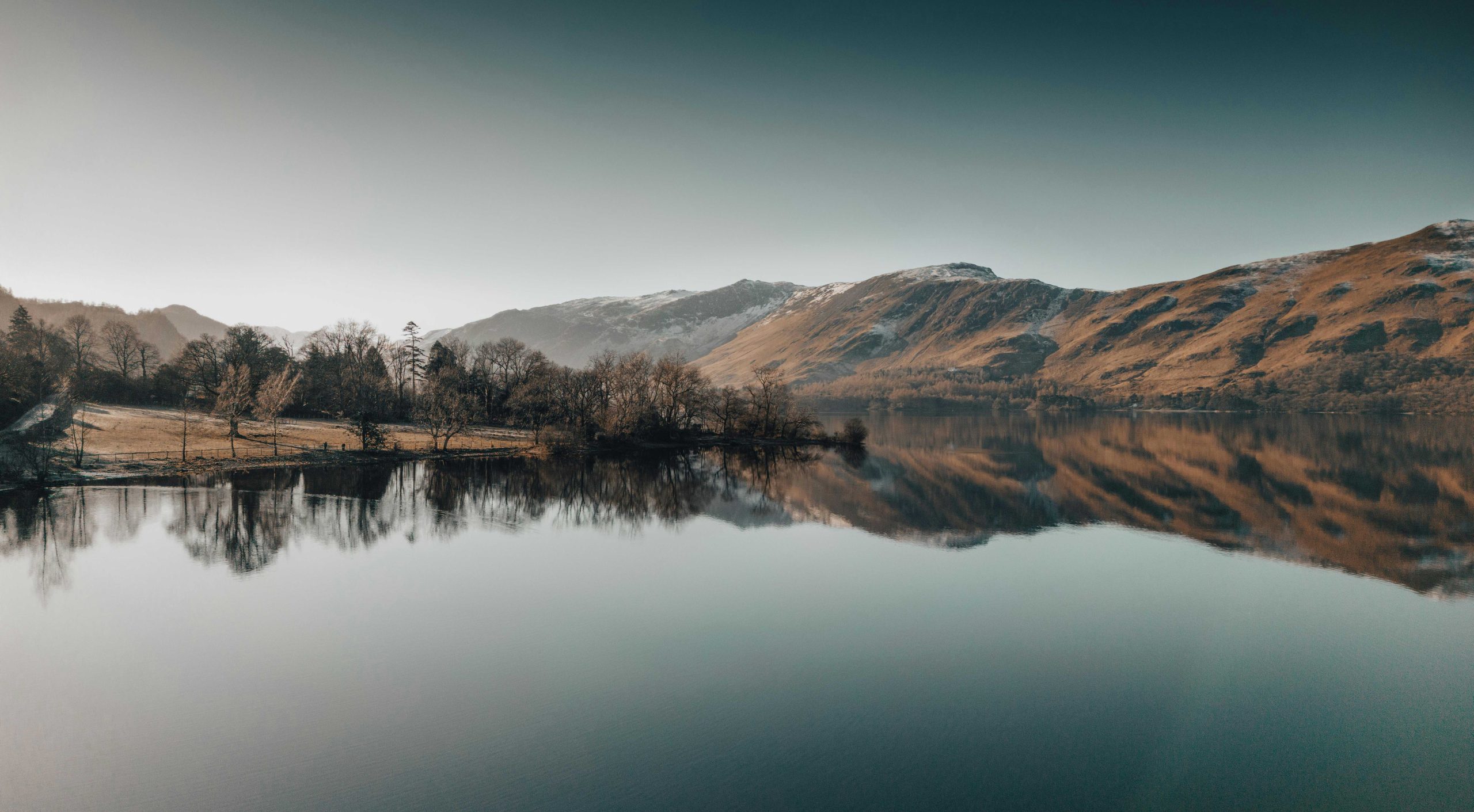
Photo Credit: Jonny Gios, Unsplash
Safety First!
Walking in the fells during winter can be magical, but it’s important to always stay safe. Check the weather forecast before you set off, wear appropriate clothing, carry a map and compass, and plan your route in advance.
Take a look at the Lake District Mountain Rescue’s ‘Adventure Smart’ campaign before ewe begin your ramble.
1. Loughrigg Fell
Starting Point: Ambleside or Rydal | Difficulty: Easy | Time: 2-3 hours
This is a fantastic first Lakeland fell, offering panoramic views of Grasmere, Rydal Water, and Windermere. The route is well-marked, with a gentle ascent and several fun trails to explore. In winter, the views over snow-dusted fells are stunning.
- Interesting Fact: Loughrigg is known for its caves and the scenic Rydal Cave, which kids love exploring!
- Herdy Spotting: Keep an eye out for Herdwick’s grazing along the lower slopes.
- Nearby Herdy Shop: Ambleside
2. Catbells
Starting Point: Hawes End, near Keswick | Difficulty: Easy to Moderate | Time: 2-3 hours
A classic favorite, Catbells offers one of the most rewarding short walks in the Lake District. The route is relatively straightforward, with breathtaking views over Derwentwater. However, the walk does involve 2 small scrambles, so it’s best to avoid in wet and icy weather.
- Interesting Fact: Catbells is known for its family-friendly route, often described as a “mini-mountain” for its manageable climb.
- Herdy Spotting: Frequent sightings on the lower slopes.
- Nearby Herdy Shop: Keswick
3. Orrest Head
Starting Point: Windermere | Difficulty: Easy | Time: 1-2 hours
This short walk offers one of the most accessible panoramic views over Lake Windermere. The path is well-maintained and perfect for beginners. It’s location is also great for rewarding yourself with a brew and a slice of cake in Windermere as a reward for completing your walk.
- Interesting Fact: This was Alfred Wainwright’s first Lakeland fell, igniting his lifelong passion for the Lake District.
- Herdy Spotting: Rare, but the lower slopes may surprise you!
- Nearby Herdy Shop: Bowness-on-Windermere
4. Lingmoor Fell
Starting Point: Elterwater | Difficulty: Moderate | Time: 3-4 hours
Lingmoor Fell offers stunning views over the Langdale Pikes. The path is slightly more challenging but manageable in winter, especially with sturdy footwear. Your hardwork will be rewarded however, as this area is a favourite of our Herdwick friends.
- Interesting Fact: The name “Lingmoor” refers to the ling heather that blooms here.
- Herdy Spotting: Very likely! Herdwicks roam free here.
- Nearby Herdy Shop: Grasmere
5. Silver How
Starting Point: Grasmere | Difficulty: Moderate | Time: 2-3 hours
This walk offers sweeping views over Grasmere, Easedale Tarn, and the surrounding fells. The route begins with a steady climb but is relatively straightforward, making it a perfect introduction to winter walking in The Lakes.
- Interesting Fact: Silver How is known for its links to the famous poet William Wordsworth, who lived in nearby Dove Cottage.
- Herdy Spotting: Frequent sightings, especially on the lower slopes.
- Nearby Herdy Shop: Grasmere
6. Hallin Fell
Starting Point: Howtown, Ullswater | Difficulty: Easy | Time: 1-2 hours
This short but rewarding climb offers magnificent views over Ullswater. The circular route is perfect for families and a favourite for dog walkers.
- Interesting Fact: Hallin Fell is often called the “jewel of Ullswater” due to its stunning vistas.
- Herdy Spotting: Common on the slopes!
- Nearby Herdy Shop: Keswick (about 20 minutes away)
7. Rannerdale Knotts
Starting Point: Buttermere | Difficulty: Easy to Moderate | Time: 2-3 hours
This picturesque fell provides stunning views over Buttermere, Crummock Water, and the surrounding peaks. The route is short but involves a bit of scrambling near the top, making it a fun and manageable challenge in winter.
- Interesting Fact: Rannerdale is famous for its beautiful bluebell displays in spring, but in winter, the crisp views over snow-dusted peaks are equally breathtaking.
- Herdy Spotting: Common on the lower slopes and fields around Buttermere.
- Nearby Herdy Shop: Keswick
Start Your Winter Adventure!
These seven beginner-friendly fells are the perfect starting points for your Lake District journey, offering manageable climbs, stunning views, and plenty of opportunities to spot Herdwick’s. Remember to prioritize safety, dress warmly, and enjoy the magic of the fells.
Happy walking!
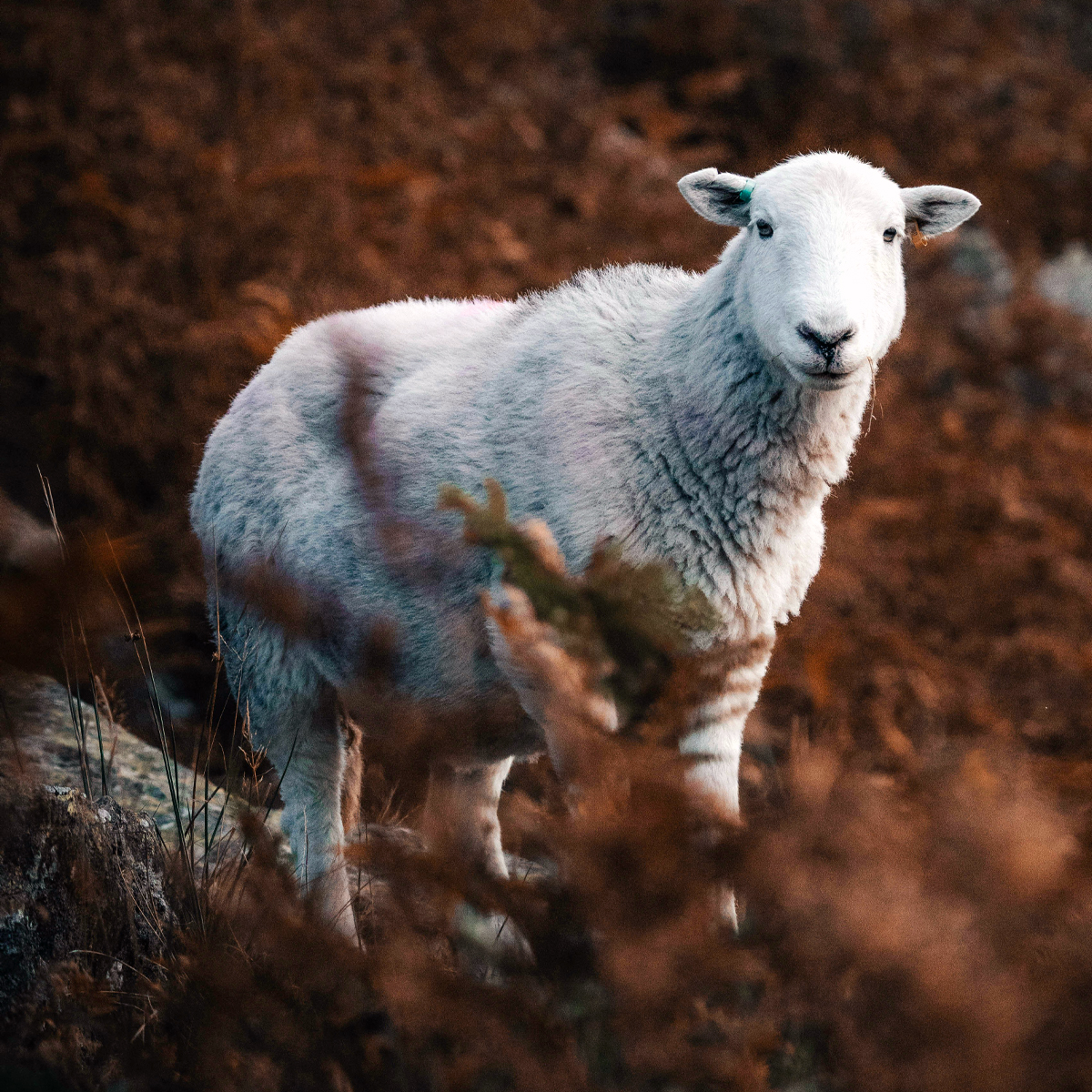
Photo Credit: Jonny Gios, Unsplash
Featured products
As the crisp air rolls in and the leaves turn golden, there’s no better time to visit the Lake District than during the autumn months. With fewer crowds, stunning views, and loads of activities to enjoy, the Lakes offer a perfect getaway for anyone looking to escape into nature. Whether you’re an adventurer or someone who enjoys a cosy day out, Autumn in the Lakes has something for ewe.

Photo Credit: Ethan Unzicker, Unsplash
1. Explore the Fells on Foot: Autumn Hikes
Hiking is a must in the Lakes, and autumn brings its own special magic to the fells. As the hills turn amber, walking through the landscape feels like stepping into a painting. Popular routes such as Catbells, Gummers How, and Wansfell Pike offer beautiful views of the autumnal scenery. Don’t forget to pack your camera – the colourful foliage and autumn sun will make for some incredible shots!
For some more walking inspiration, check out our blog: Herdy’s Top 5 Autumn Walks
2. Take a Scenic Drive
If you’d rather explore the park by car, autumn is the perfect time for a scenic drive through the winding roads of the Lake District. From the Langdale Valley to Kirkstone Pass, the ever-changing colours make every twist and turn feel like an adventure. A favourite drive is the route between Keswick and Ambleside, where you’ll pass by Thirlmere and Rydal, both offering stunning lake views with a backdrop of golden hills.
Make sure to stop off in Keswick, where our Herdy shop is located in the heart of the town, it's the perfect spot to pick up a souvenir or two.
3. Savour the Season: Local Autumn Food & Drink
The Lake District is renowned for its delicious local produce, and autumn is the perfect time to sample some seasonal treats. Many cafes and restaurants embrace the harvest, offering hearty soups, stews, and bakes made with locally sourced ingredients. Why not try a warming Cumberland sausage, freshly baked Grasmere gingerbread, or a big bowl of Cartmel’s sticky toffee pudding. Yum!
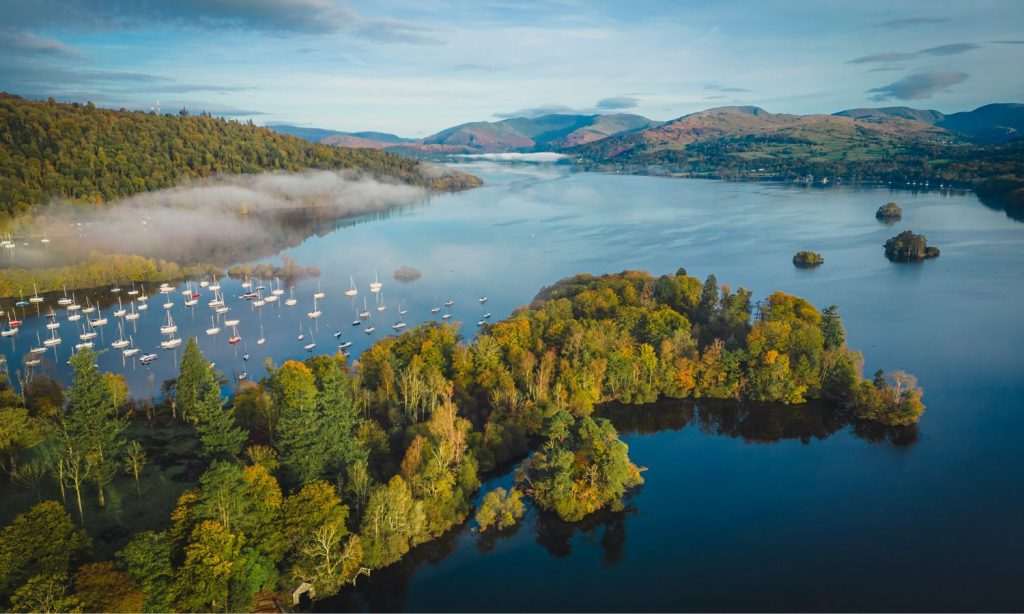
Photo Credit: Jonny Gios, Unsplash
4. Cruise the Lakes
What better way to experience the Lakes than by boat? Autumn cruises on Windermere, Ullswater, and Derwentwater offer a peaceful retreat with stunning reflections of the surrounding fells and trees. With cooler temperatures, you can wrap up in your cosiest fleece or blanket and sit on the deck with a hot drink as you take in the scenery.
After your cruise on Lake Windermere, be sure to pop into our Bowness-on-Windermere store, just a stone’s throw from the water.
5. Discover Lake District Culture: Museums & Galleries
The Lake District isn’t just about outdoor adventures; it’s rich in culture and history too. Explore the homes of famous literary figures like Beatrix Potter and William Wordsworth, whose works were inspired by the local landscape. The Beatrix Potter Gallery in Hawkshead and Dove Cottage in Grasmere are must-visits for literary lovers.
On a rainy autumn day, a visit to Keswick’s Pencil Museum, the Lakeland Motor Museum in Backbarrow, or the Kendal Museum which is a great way to stay warm while learning something new. After soaking in some culture, ewe can pop into our Kendal store and the home of Herdy HQ.
6. Capture the Perfect Autumn Sunset
Autumn sunsets in the Lake District are something to behold. Head to popular viewpoints like Orrest Head or Latrigg in Keswick for panoramic views of the lakes and fells bathed in the setting sun. With fewer daylight hours, you’ll catch the sunset earlier, allowing plenty of time for an evening by the fire in one of the region's cosy pubs.
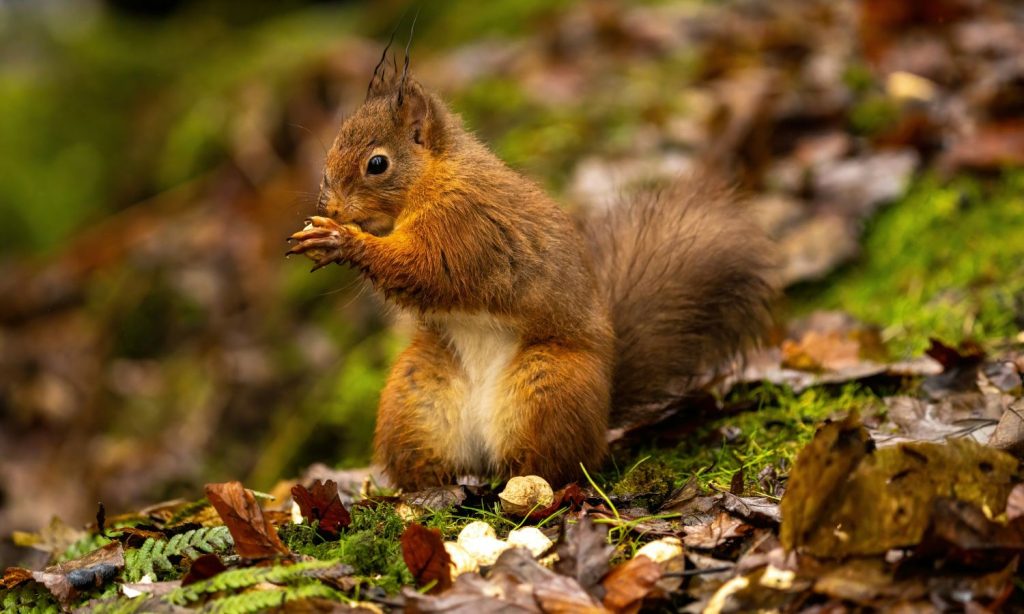
Photo Credit: Jonny Gios, Unsplash
7. Witness Wildlife in Its Autumn Glory
Autumn is a brilliant time to spot wildlife in the Lakes. Red squirrels, deer, and even otters are more active as they prepare for winter. Head to Whinlatter Forest near Keswick or Rydal Water for a chance to see some of the local wildlife. If you’re lucky, you might even spot the elusive golden eagle soaring over the fells.
You will also be able to spot plenty of Herdwicks roaming the Lake District Fells, who have called this landscape their home for over 5000 years. Take a look at Our Top 5 Walks For Herdwick Spotting blog for more inspiration.
Autumn in the Lakes is the perfect time for a memorable getaway. Whether you're hiking the fells, cruising the lakes, or simply enjoying local food and culture, there’s something for everyone. And while you're here, be sure to visit one of our Herdy stores in Kendal, Ambleside, Keswick, Grasmere, or Bowness-on-Windermere. Our team is always ready with a warm welcome and some lovely Herdy goodies to help you remember your autumn adventure in the Lakes.
Featured Products
Get your blood pumping this summer and take in some of the best views the Lake District has to offer. From undiscovered gems to well-known routes, we hope to inspire your next adventure in The Lakes.
Scafell Pike
Location: Wasdale Height: 978 metres Time: 5-6 hours
Starting Points: Wasdale Head CA20 1EX | Borrowdale CA12 5XJ | Langdale LA22 9JY
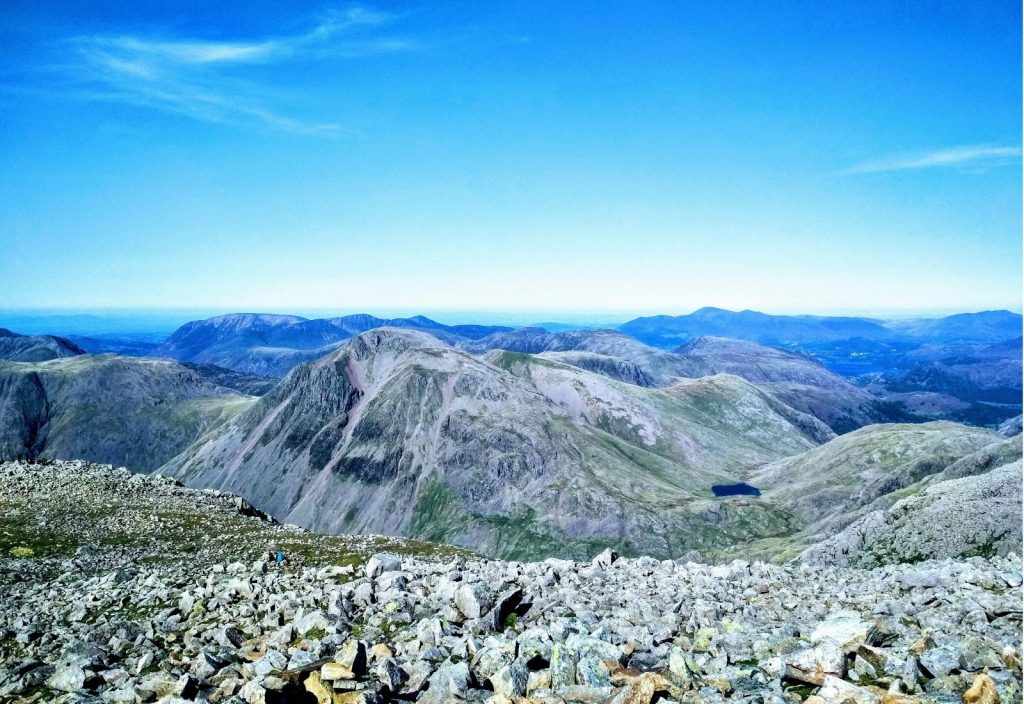
Photo Credit: Amit Jagnade
It would be wrong for us not to include England’s Highest Peak in our list of challenging rambles. Scafell Pike sits at the centre of The Lake District National Park and dominates the Cumbrian skyline. The route to the top is very popular with tourists and it’s easy to see why.
Did ewe know that Scafell Pike is not only the highest mountain in England? It is also the highest war memorial in the UK. The most popular route up the mountain is from Wasdale, the route is straight up and straight down, making it a steep climb. All routes to the top will involve a scramble at the final ascent.
This mountain is the most time-consuming of our highlighted walks, meaning you will certainly deserve a warming lunch once you get to the top. A comforting cup of hot soup should do the trick! Pack wisely with one of our Herdy Soup Flask to keep your lunch fresh and warm.
Rosthwaite Fell
Location: Rosthwaite Height: 612 metres Time: 1 hour 30 minutes
Starting Points: National Trust Seatoller Car Park CA12 5XN | Seatoller CA12 5XG
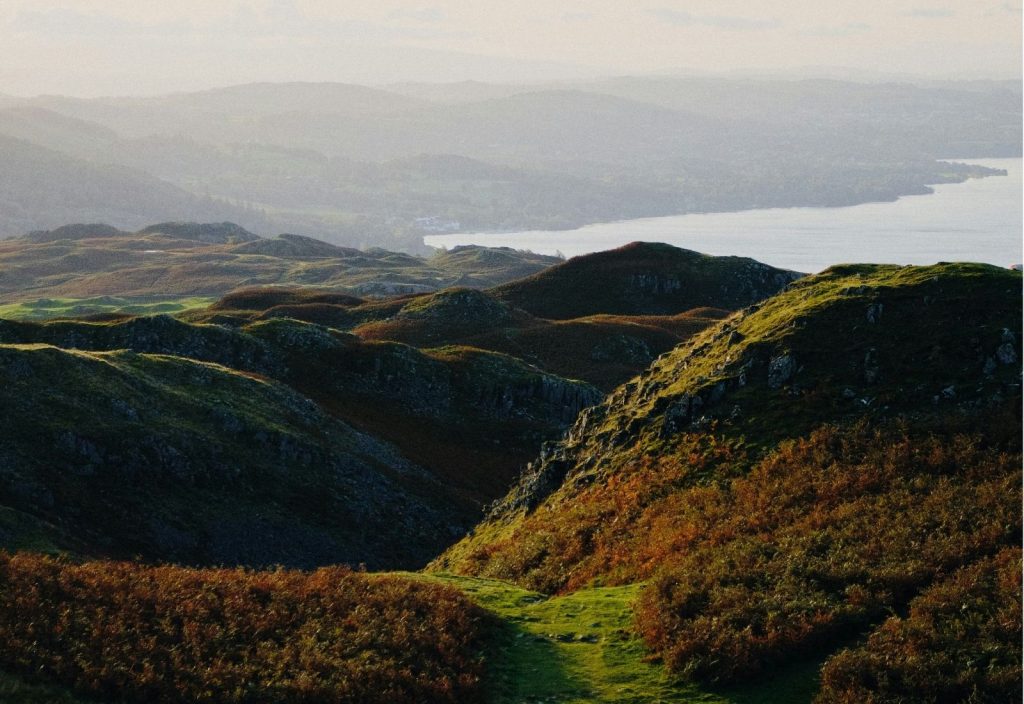
Photo Credit: Ian Cylkowski
Known as one of the most difficult climbs of The Wainwright’s, Rosthwaite Fell (aka Bessyboot) is an undiscovered gem in the heart of The Lakes. The trek to the top can be steep in places, plus, the routes are not well documented. This however makes the fell a quiet and undisturbed climb to the top.
The west and east valleys are paved with waterfalls and streams which descend into the Derwent River which lays at its base. To the south, Rosthwaite is linked to Glaramara Fell by a marshy (and sometimes boggy) ridge.
This walk is also great for our 4-legged friends as the routes are quiet and there are many great places to explore.
Blencathra
Location: Threlkeld Height: 625 metres Time: 2 hours
Starting Points: Blencathra Field Centre CA12 4SG
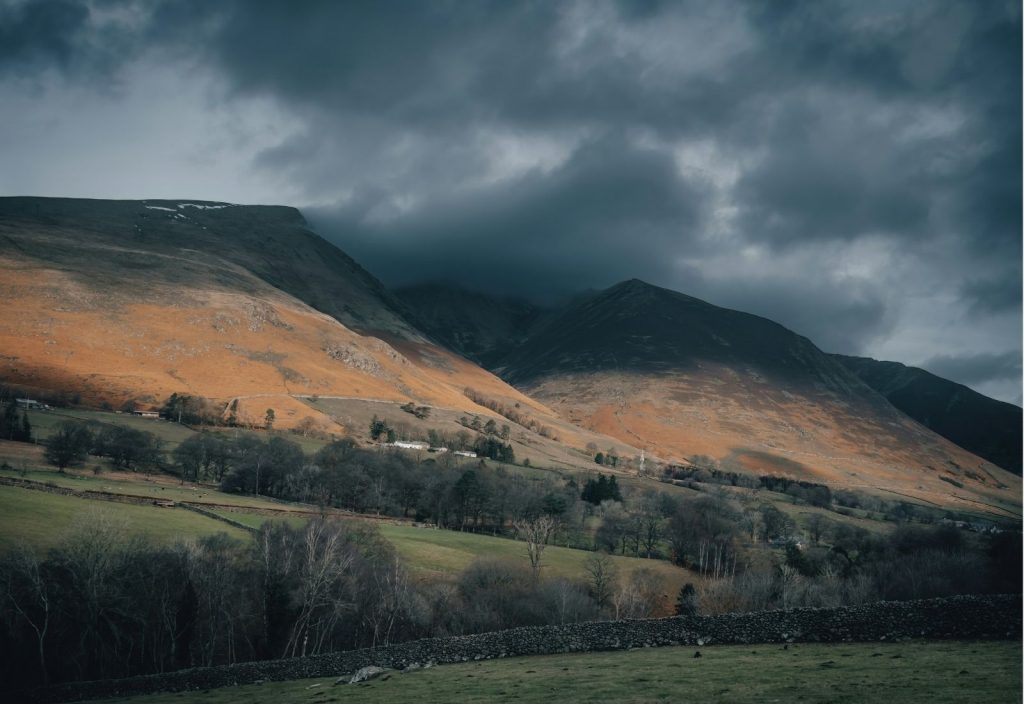
Photo Credit: Jonny Gios
For those experienced climbers amongst us, the trek up to Blencathra shouldn’t cause any problems. However, we would advise you to only tackle this route when the weather is on your side, as wind and rain can distort your view. The approach from Sharp Edge can be as treacherous as it sounds. However, if you have a steady footing and a head for heights the walk can be one of the most rewarding in The Lakes.
This icon Lake District Wainright has often been noted for its unusual name, pronounced blen-ka-thruh. The name has origins in the old Cumbrian dialect, 'blain' meaning top and 'cadeir' meaning chair, which loosely translates as the chair-like mountain. Which is very apt, as you will certainly need a sit down once you reach the top. A hot chocolate or steaming cup of coffee at the summit will be well deserved, keep your drinks piping hot in one of our Herdy flasks, a must-have in every adventure’s backpack.
Helvellyn
Location: Between Ambleside and Keswick Height: 950 metres Time: 4-5 hours
Starting points: Swirls Car Park Keswick CA12 4TW | Thirlmere A591 westen layby
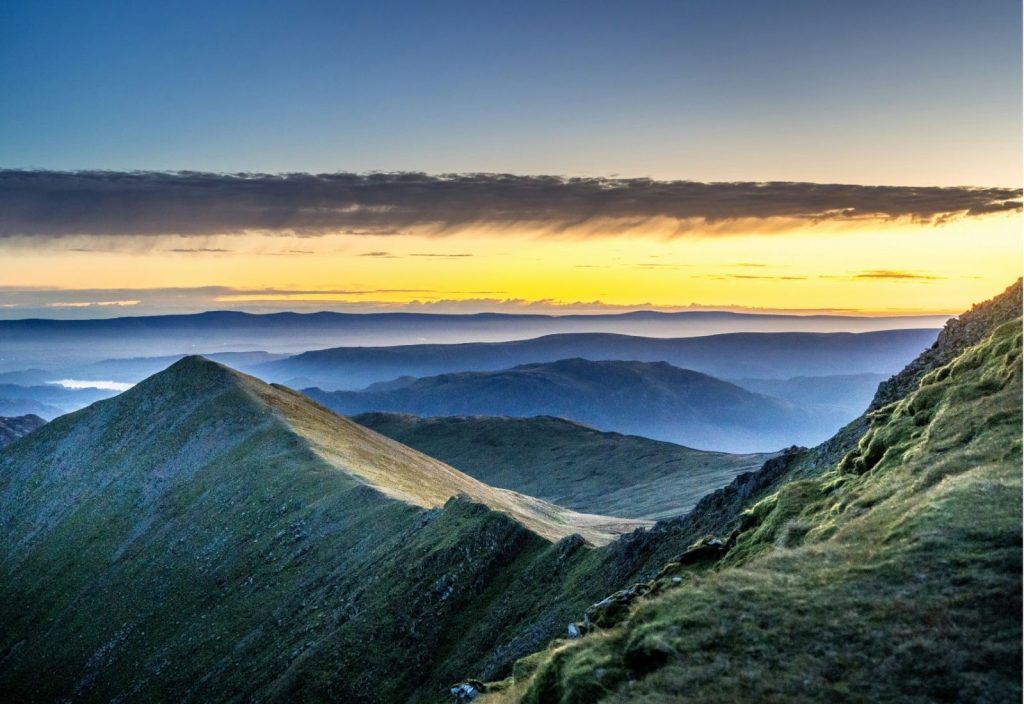
Photo Credit: Jonnny Gios
One of the most popular rambling destinations in the Lake District and looking at the views, it is easy to see why. Helvellyn is nestled between Ullswater and Thirlmere Lakes, the mountain has 5 ridges to navigate to its peak. The most famous of which is Striding Edge, known as the most challenging route, it attracts over 250,000 ramblers every year. You may need to get on your hands and knees at certain points if you're tackling Striding Edge. we wouldn’t recommend this climb if you are new to hiking in the fells, but it is definitely one to aspire to.
You might even be lucky enough on your trek to see some native wildlife. Including buzzards, Peregrine Falcons, Skylarks and of course, the free roaming Herdwicks.
The Old Man of Coniston
Location: Coniston Height: 802 metres Time: 4 hours
Starting Points: Walna Scar Car Park | Old Station Car Park, Old Furness Rd
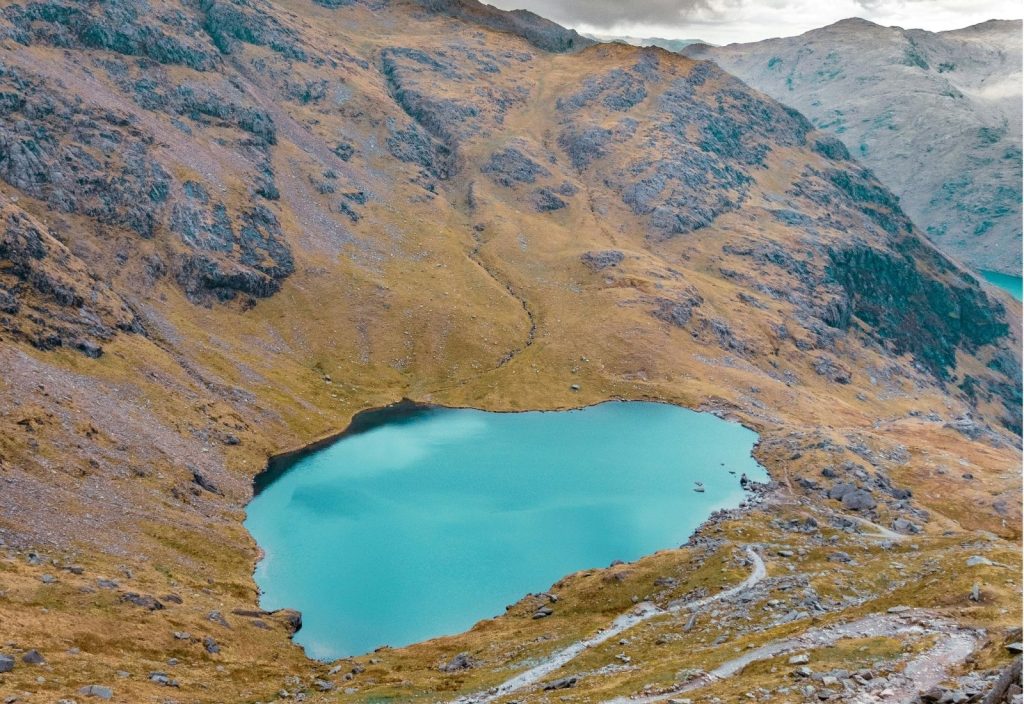
Photo Credit: Jake Colling
This is arguably one of the most beautiful walks in the Lake District, and even though it’s a challenging climb, you will be rewarded along the route with some amazing sites. As you begin your journey from Walna Scar car park you’ll walk along the same path the miners took, dating back as early as the 12th century.
The route suddenly takes a sharp assent as you pass the remains of the old Cumbrian copper mines. Slightly further up, you’ll pass Low Water, the waters are inviting in the warmer months and crystal clear. The tarn is also a good indicator to let you know you’re nearly at the top!
the trek down the other side of the fell does not disappoint, as you pass Goat’s Water and admire the surrounding fells.
The more leisurely stretch on the way down to the car park allows you to enjoy taking in the views over Coniston water. We advise giving this Ramble plenty of time so you can enjoy all there is to see along the way. This walk can get very busy during the summer months, we recommend setting your alarms and getting there early to avoid the crowds.
All mountains/fells listed in this blog are challenging walks. Please do your own research before heading out onto the lake district fells and remember to pack wisely.
Take a look at AdventureSmartUK who have teamed up with Mountain Rescue to put together a handy guide to ask, Are you Adventure Smart?
LINK - https://www.mountain.rescue.org.uk/safety/adventure-smart
If you fancy a less challenging walk this summer, why not try one of check out our other walking inspiration blogs below.
Featured Products
You can’t always guarantee sunshine in the Lake District, but that shouldn’t dampen your spirits! Rain or shine, the Lake District National Park offers a range of activities and places to explore. Take it from us, Herdy’s know how to have fun in the rain. Here are some of our top recommendations to ensure you have a memorable visit, even when the heavens open.
Water Sports: Embrace the Lakes

Photo Credit: Ben White
Why not dive right into the fun with some water sports? After all, it doesn’t matter if you fall in! Paddleboarding is a fantastic option for first-timers looking for a gentle yet fun activity on the water. If you’re visiting with family, renting a rowing boat can be a great way to explore the serene lakes together. For those who crave a bit more adventure, kayaking and canoeing are perfect for navigating the Lake District’s stunning waterways. Whether you're a novice or a seasoned pro, these activities ensure that the rain only adds to the adventure.
Top Spots For Paddleboarding
- Lake Windermere | Graythwaite Adventures
- Coniston | Coniston Boating Centre
- Ullswater | Ullswater Paddleboarding
- Derwentwater | Get On The Lake
- Wastwater | Paddleboarding on Wastwater requires you to take your own board.
Take A Boat Cruise: Stay Dry, See More

Photo Credit: Jonny Gios
When the rain is bouncing, a boat cruise is an ideal way to see the lakes without getting soaked. Lake Windermere offers all-year-round cruises with covered boats, allowing you to enjoy the stunning views in comfort. Sit back, relax, and take in the picturesque landscapes as you glide across England’s largest lake. This is a perfect activity for all ages, making it a great choice for families or couples looking to experience the beauty of the Lake District from the water.
Windermere Lake Cruises are the go-to company for exploring England’s largest lake by boat. They offer three routes and a variety of passes.
Find out more about Windermere Lake Cruises HERE>
Catch A Film: Cosy Up Indoors

Photo Credit: Corina Rainer
The Art-deco Royalty Cinema in Bowness is a great place to escape the weather and enjoy a classic or new release. Zeffirellis in Ambleside offers not only films but also delicious vegetarian dining options on-site. The Alhambra in Keswick and the Roxy Cinema in Ulverston are also excellent choices, each with its ewe-nique character and cosy atmosphere. A movie day can be a perfect way to unwind and take a break from outdoor adventures.
Did ewe know?
Some big Hollywood blockbusters have been filmed right here in the Lake District…
- Supernova: Starting Colin Firth and Stanly Tucci, the couple drives all over the Lakes in their RV visiting many of the counties most famous beauty spots.
- Miss Potter: This film truly shows the Lake District at its best. With filming locations included Louhrigg, Grasmere and Coniston.
- Withnail & I: The cult classic was filmed in and around Shap, including the infamous red phone box scene which was shot in the village of Bampton. The phone box remains a tourist attraction for fans of the film.
- 28 Days Later: The final scene of Danny Boyles’s epic post-apocalyptic film was shot around the village of Ennerdale.
Star Wars, The Force Awakens: Episode VII of one of the biggest movie franchises of all time had one of its most iconic scenes filmed in the Lake District. Derwentwater and Bassenthwaite combine to create the planet of Takondana, with views of Skidaw in the distance.

Potter Around the Shops: Retail Therapy
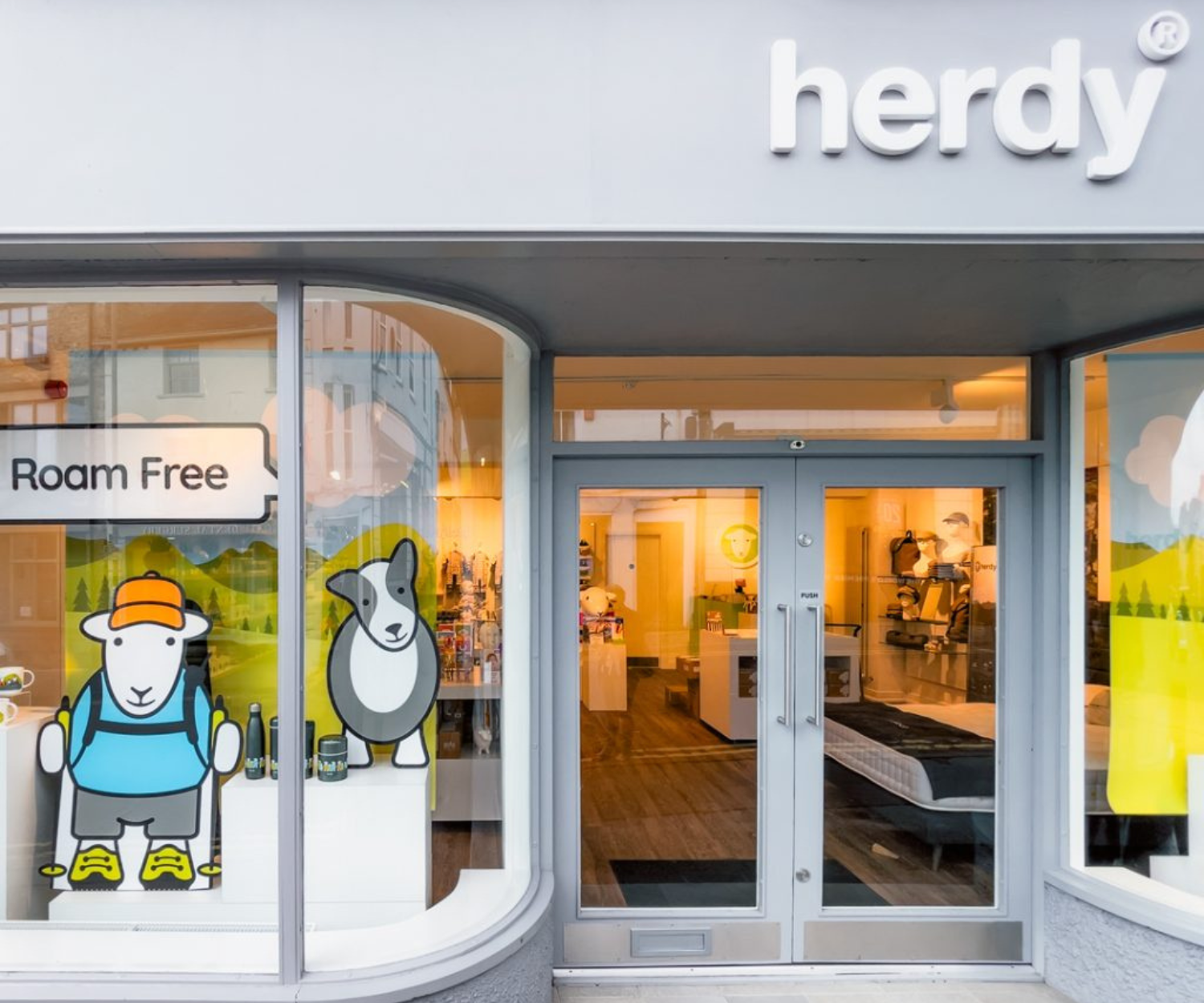
At Herdy, we know a thing or two about shopping in the Lake District! The region is packed with independent boutique shops that offer unique gifts and local crafts. Wander through the charming streets of towns like Keswick, Ambleside, and Grasmere to discover new and exciting finds to take home. And of course, don’t forget to visit our Herdy stores for some ewe-nique gifts to remind you of your time in the Lakes.
Whether you’re looking for a special souvenir or simply enjoying a leisurely browse, shopping in the Lake District is a great way to spend a rainy day.
How to find us
- Ambleside, 3 Lake Rd, LA22 0AD, also the home of Herdysleep
- Kendal, 13-15 Stramongate, LA9 4BH, Herdy HQ
- Keswick, 8 Tithebarn Street, CA12 5ED
- Grasmere, College Street, LA22 9SZ, our first Herdy store
- Bowness-On-Wondermere, Lake Road, LA23 3BT

Learn Something New: Museums and Galleries

Photo Credit: Adrien Olichon
The Lakes has a rich in history and culture, and a rainy day is the perfect opportunity to delve into its heritage. Visit a Lakeland museum or art gallery to learn something new and fascinating.
Some of our favourites
- The Abbot Hall Art Gallery in Kendal showcases stunning works of art by local and international artists. They also have works dating back to the 1700s as part of their permanent collection.
- A firm family favourite, the Pencil Museum in Keswick offers a quirky and informative experience, totally unique to the Lake District.
- Blackwell, The Arts and Crafts House in Bowness-on-Windermere, is a beautiful example of the Arts and Crafts movement.
- Wray Castle in Ambleside provides an intriguing glimpse into Victorian architecture and design. There are also some beautiful walks around the grounds for you to enjoy.
- Don’t miss Dove Cottage in Grasmere, the former home of poet William Wordsworth, where you can step back in time and explore the life and work of this literary giant.
Waterfall Walks: Nature’s Beauty Enhanced

Photo Credit: Ian Cylkowski
Rain can actually enhance the beauty of the Lake District’s waterfalls, making them even more spectacular. Don your waterproofs and set out to explore some of the region’s most stunning cascades.
Take a look at some of our favourites for a rainy day:
Rydal Falls | Set in the grounds of Rydal Hall this is a very popular beauty spot, make sure to set off early to avoid the crowds. You can walk the circular route to Buckstone Jump back to the falls. The route is only 3 miles long with little elevation, so perfect for rainy days.
Ghyll Force | This breathtaking beauty spot is particularly impressive after a rainfall. The lush, verdant surroundings and the powerful rush of water create a magical atmosphere that’s well worth a visit.
Colwith Force | Colwith Force on the River Brathay cascades down a total of 40ft, creating impressive waterfalls. The River Brathay drains the Langdale hills, connecting Little Langdale Tarn to Elterwater. Further along, Skelwith Force, channels the water through a narrow gap, forming a striking curtain fall, especially after rain.
Take a Tour: Scenic Journeys

Photo Credit: Sugden Guy
If you prefer to stay dry while still seeing the sights, consider taking a tour by bus or train. The Lake District’s bus services are convenient and affordable, with journeys starting from just £2. The 555 bus route is particularly popular, taking you through the heart of the Lakes with plenty of stunning scenery to enjoy from the top deck. For a more nostalgic experience, explore the lakes by steam train with the Ravenglass and Eskdale Railway. This charming railway offers a scenic journey through the picturesque Eskdale Valley, providing a ewe-nique way to appreciate the area’s natural beauty.
You can find out the latest bus information HERE>
And information about the Ravenglass and Eskdale Railway HERE>
Whatever the weather, you’re sure to enjoy your visit to the Lake District. Embrace the rain and discover the many wonderful activities and sights this beautiful region has to offer. From water sports and boat cruises to museums, shopping, and scenic tours, there’s something for everyone to enjoy.
And remember, a little rain never stopped a Herdwick from having fun—so why should it stop ewe?
There's no better companion to take on a walk than man's best friend and there’s no better place to explore than the Lake District National Park. Packed with outstanding natural beauty, lakeside strolls and challenging climbs that you and your four-legged friend can enjoy.
Take a look at our top 5 rambling routes for you and your pooch.
Derwentwater Circuit, Keswick
Time: 5-6 hours Distance: 15.3km Elevation: 918ft

Photo Credit: Jonny Gios
Known as the 'Queen of the Lakes,' the Derwentwater circular walk offers a delightful journey along its picturesque shoreline and through enchanting ancient woodland. This relatively easy route showcases breathtaking views of the lake, framed by dramatic fells and lush greenery, making it a favourite for walkers of all abilities and our four-legged friends. Along the way, you'll find plenty of idyllic picnic spots to pause, relax, and soak in the serene beauty. For those looking for a shorter adventure, smaller sections of the route can be explored.
Simpson Ground Reservoir
Time: 1.45 hours Distance: 5.3km Elevation: 725ft

Nestled in between Newby Bridge and Cartmel Fell, this lesser-known route is a real gem of a find. You may be lucky enough not to see another soul on your ascent through the enchanted woodland. As you climb through the trees, remember to look east for the most spectacular views.
The route can be very wet and boggy at times so be prepared for some seriously muddy boots. Once you reach the summit the tranquil waters of the reservoir will be worth all the effort. The walk is a great route to experience with your dog, with lots of nooks and crannies for you both to explore.
Haweswater Reservoir
Time: 4.5 hours Distance: 17 km Elevation: 1824ft
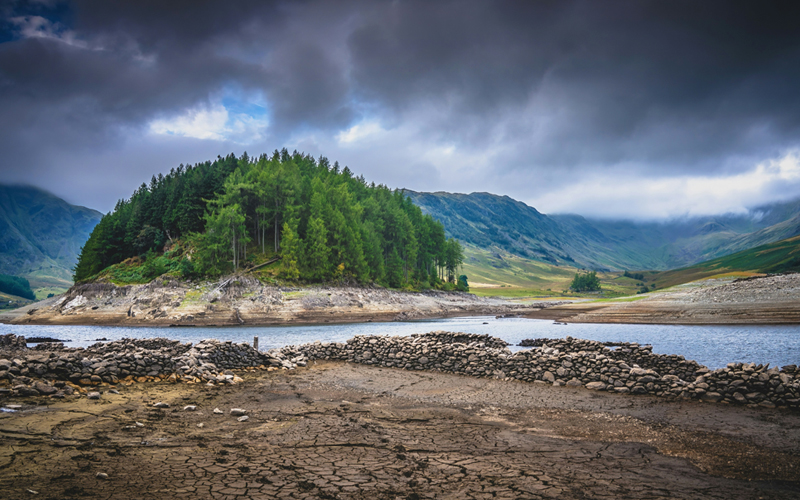
Photo Credit: Jonny Gios
The Haweswater circular walk is a charming and often quieter route that blends varied terrain with spectacular scenery. This 10-mile route winds through several different landscapes, including woodland trails, open fell paths, and rocky sections, offering something for everyone. Rated as moderately difficult, it’s manageable for regular walkers but includes some inclines. Along the way, enjoy breathtaking vistas of Haweswater Reservoir, rugged hills, and possibly even spot some red squirrels. Historical points like the old village of Mardale, which is now submerged, add some great talking points. It’s a fantastic walk for dogs, with plenty of streams for drinking and exploring, making it a rewarding day out.
Tarn Hows
Time: 1 hour Distance: 3.2km Elevation: 300ft

Get ready to soak up some spectacular views. Tarn Hows is a man-made beauty spot on the outskirts of Ambleside. Surrounded by wooded hills, it’s the perfect location for an easy stroll. This stunning tarn is a big hit both with locals and visitors to The Lake District. We recommend getting there early to beat the crowds. The tarn is most popular during the summer months, although it is just as spectacular on a crisp winter’s day. Just remember to pack something warm for lunch.
Orrest Head, Windermere
Time: 1.20 hour Distance: 4.5km Elevation: 518ft

Photo Credit: Ian Cylkowski
Possibly the most popular walk in The Lakes and once you reach the top it is easy to see why. The top of Orrest Head delivers 360 panoramic views over Lake Windermere and beyond. The stroll to the top will only take you around 20 minutes, a minimum effort for maximum results! You can then decide to meander back down to Windermere for a well-deserved cuppa and slice of cake, or you can carry on through Causeway farm and St Catherine's woodland. This walk is extremely popular, especially during the summer, so please remember to keep your furry friend on a lead.
Advice for walking your dog in The Lakes
Be mindful of wildlife
Cumbria has the most concentrated number of animals living in the county than any other, with sheep out-numbering people by 6:1. Farm animals will certainly not be the only creatures you will encounter on your walks. You may be lucky enough to see Red Squirrels, Osprey, Otters or Red Deer, to name a few. The Cumbrian landscape is home to lots of wildlife so take care not to disturb them in their natural habitat.
Download our FREE ‘Lead On’ poster to show your support.
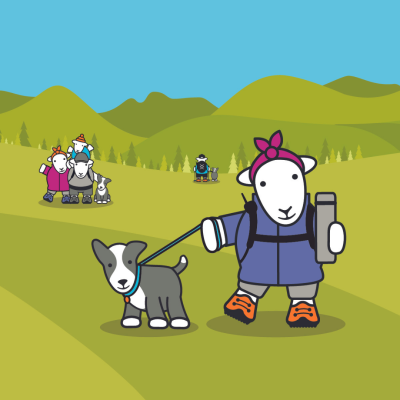
Keep dogs on a lead
It’s particularly important to keep control of your dog in areas where there's livestock. Keep your distance from cattle which can be dangerous, especially when they have calves to protect. While lots of us love dogs, some people aren't too keen. That's why it is important to make sure your pooch is under control when other people are around, especially children.
Leave it as you found it
In 2017 the Lake District was given UNESCO status for its historical significance and outstanding natural beauty. All visitors to The Lakes are asked to take all belongings and litter away when they leave. Take a look at The Countryside Code before ewe visit.
Pick up the poop
Scooping up your dog's poop helps keep the Lake District clean and safe for everyone to enjoy. Please use the bins provided.
Dog Walk Essentials From Herdy
Other blogs you may like
Known famously around the world, Cumbria has some of the best and most visually b-ewe-tiful walks during the autumn months. As the landscape transitions from rich greens to deep ambers and reds, autumn is arguably the best time to enjoy this glorious landscape and the views it has to offer.
So pack your flask and butties and get yourself to…
Hope Park

Nestled between the lively market town of Keswick and Derwentwater is a garden haven and must-see attraction. Hope Park’s lush gardens offer scenic walks with multiple picnic spots to stop and admire the stunning landscape and views of the iconic ‘wedding cake’ tree.
Nature enthusiasts will be captivated by the enchanting woodland pathways, where diverse wildlife, including native red squirrels, frogs, pheasants, deer, birds, and butterflies, make an appearance.
Families will find Hope Park a treasure trove of entertainment. A charming café awaits hungry tummies, and there's an assortment of mini-games, from crazy golf, as well as a putting green. If the golf starts to get a bit too competitive, you and the family can partake in a race with remote-control boats on a replica of Derwentwater Lake.
Hope Park offers two car park options within walking distance. The Lakeside Car Park, situated right next to Hope Park has prices ranging from £3.50 for 2 hours to £10.40 for 12 hours. For a more budget-friendly alternative just a short 4-minute walk away, consider Keswick Central Car Park, offering affordable all-day parking for just £4.00.
Difficulty Rating: Easy
Postcode: CA12 5DG
More info: Click Here
Buttermere walk

Ranked number 7 on the UK’s greatest views, Buttermere is a cherished destination in the Lake District. It has gained popularity among hikers, offering a breathtaking journey through lush forests and over majestic mountains. During late summer and into the autumn months, the heather that coats the landscape begins to flower, creating a crimson coloured carpet that spans for miles over the Cumbrian fells.
This scenic trek provides an authentic experience of the national park, making it an ideal choice for newcomers.
One of the standout features of this walk is the mesmerizing reflection cast by the towering mountains into the Lake. However, the true gem lies at the conclusion of the journey – a charming, traditional pub awaits for a well-deserved pint or pot of tea.
The adventure commences and concludes at Buttermere GR NY175170, covering a distance of approximately 6.2 miles. Depending on your pace and the number of stops you make to savour the scenery, it can take anywhere from 1 to 2 hours. The terrain, with a difficulty rating of 2, needs a steady footing in places but is manageable for most.
For those arriving by car, the most convenient parking option is the Buttermere car park, which operates on a pay-and-display system.
Difficulty Rating: Easy / Moderate
Postcode: CA13 9UZ
More info: Click Here
Wast Water

Located to the west of the national park, Wast Water in Wasdale offers a serene escape. For those seeking a leisurely stroll, the main attractions here are the breathtaking vistas and the relaxing reflections on the lake. However, if you crave adventure, there are some exciting options to explore:
1. Mountain Goat High Mountain Passes Tour
- Cost: Approximately £70.00 per adult
- Duration: 8 hours
- This guided tour will take you through the Lake District Central mountains and Western Fells, showcasing the scenic beauty. Group sizes are limited to 16 participants.
- You'll travel in a comfortable Mercedes Sprinter minivan with onboard commentary.
- Participants aged 5 to 99 can join this full day thrilling excursion. Booking available here.
2. Explore Gosforth Village and Beyond
- Opt for the shuttle bus to Gosforth Village, where you can rent a paddleboard or a bicycle for a delightful 30-minute ride to Wast Water.
The main walking trail spans about 5.6 miles with a gentle elevation of 350 feet. Completion time typically falls between 2 to 3 hours, depending on your pace.
Parking can be a bit tricky, but we recommend using the shuttle bus and utilizing the National Trust Car Park. If you prefer to drive independently, there's a small parking area in Wasdale Head on the lake's northeastern side. However, please note that it may be challenging to find available parking spaces.
The walk's terrain varies but generally requires a steady footing. Despite this, it promises a peaceful and relatively easy journey, making it well worth the visit.
Difficulty Rating: Easy / Moderate
Postcode: CA20 1EX
More info: Click Here
Whinlatter forest

Nestled 1,000 feet above sea level, Whinlatter Forest beckons as an ideal walking destination for families and nature enthusiasts. This picturesque woodland boasts a range of amenities, including food and drink stalls, playground, bicycle rentals and more. All the walking trails begin and conclude at the campsite. Most of the walks are suitable for those aged 10 and over.
Among the more accessible and family-friendly adventures is the guided Alpaca walk, hosted by Alpaca Ever After. Prices for this ewe-nique experience begin at £38.00 per person, with group sizes capped at 12. Proceeds contribute to Alpaca Ever After's mission of rehabilitating alpacas within the Lake District National Park. While the exact duration of the walk isn't specified, plan for approximately 1.5 hours of alpaca adventures!
For those seeking a more demanding trek, Whinlatter offers access to the Seat How Summit Trail. Along this circular route, you'll be treated to panoramic views of Derwentwater, Bassenthwaite Lake, Skiddaw and Helvellyn mountain ranges. The path ascends approximately 500 meters through lush forests and heather moorland, covering a distance of roughly 6.6 miles and requiring around 4 hours to complete.
The level of difficulty for these trails can vary based on individual preferences and fitness levels. If you're up for a real challenge, consider tackling the Summit Trail.
Convenient parking is available adjacent to the campsite for a fee of £8.00.
Difficulty Rating: Moderate
Postcode: CA12 5TW
More info: Click Here
Ennerdale

Ennerdale, nestled on the northwestern fringe of the Lake District National Park, is an enchanting destination that truly comes alive during the autumn months. This pristine corner of Cumbria boasts vibrant natural landscapes and is home to a pioneering wildland restoration project, making it an excellent choice for nature enthusiasts.
One of Ennerdale's autumn highlights are the Larch trees that grace the riverbanks, adding a majestic touch to the scenery. Before they fall, their needles turn a bright bronze-yellow, dramatically altering the landscape.
For those seeking a warm welcome and a taste of local culture, the Gather Café in Ennerdale Bridge offers a charming community-owned space to relax, supported by Forestry England and Wild Ennerdale.
Wellbeing Trail
Ennerdale's Wellbeing Trail is another reason to visit during the autumn months. This trail guides you through a serene forest, encouraging mindfulness and relaxation. Themed panels along the route invite you to connect with the forest environment, while a forest wellbeing journal (available here) enhances the experience. The 2-mile trail, starting at Bowness Knott car park meanders through peaceful woodlands, a lakeshore waterfall, and historic sites.
Other walking trails to discover around Ennerdale
- Liza Path
- Ennerdale Lake Circular Walk
- Smithy Beck
Difficulty Rating: Easy
Postcode: CA23 3AS
More info: Click here
The Lake District is filled with fantastic picnic spots that are sure to make your day out a memorable one. Here are Herdy’s top 10 picnic spots In The Lake District, each with its ewe-nique charm and character
1. Castlerigg Stone Circle
Nestled against a dramatic mountain backdrop, Castlerigg Stone Circle near Keswick makes the perfect stop for a spot of lunch. There is a small car park at the stone circle and it’s possible to walk from Keswick if you fancy a stroll. The historical site is among the earliest British circles, raised around 5000 years ago during the Neolithic period.

Photo Credit: Castlerigg Stone Circle / Jonny Gios
2. Stagshaw Gardens
A short walk from Ambleside, Stagshaw Gardens were created by the National Trust in 1957. The gardens feature an array of b-ewe-tiful flowers, with a babbling stream and secluded benches dotted along the way to enjoy your picnic.
3. Rydal Water
If you're looking for a quieter and more secluded spot for your picnic, Rydal Water is the place to be. This hidden gem is tucked away in the heart of the Lake District and offers stunning views of the surrounding mountains. You can spread out your picnic blanket by the water's edge and watch the world go by, or take a walk along the lakeside path for a scenic stroll. With its peaceful and picturesque setting, Rydal Water is a perfect spot to unwind and enjoy some quality time with your loved ones.

Photo Credit: Rydal Water / Jonny Gios
4. Derwentwater
Derwentwater is one of the most popular lakes in the Lake District, and for good reason. With its dramatic scenery and stunning views, it provides the perfect setting for a picnic with a view. You can choose from a variety of spots around the lake, from the peaceful shores of Friar's Crag to the bustling marina at Keswick. Whether you want to relax and take in the scenery or explore the lake by boat, Derwentwater is a fantastic spot for a picnic with plenty of activities and amenities to keep you entertained.
5. Easedale Tarn
Looking to entertain the little ones during your picnic escapades? Easedale Tarn has got you covered. With plenty of stone bridges for trolls to hide under and waterfalls cascading into crystal-clear pools, it's a place where imagination runs wild. Start your adventure at Allan Bank and embark on a fantastic circular walk that suits all ages. Trust us, even adults can't resist the magic!

Photo Credit: Buttermere / Jonny Gios
6. Buttermere
Welcome to a picturesque valley surrounded by stunning mountain scenery. Buttermere is the kind of peaceful spot that calls for a leisurely picnic. Whether you choose to relax by the water's edge or take a refreshing stroll around the lake, the tranquil surroundings and breathtaking views won't disappoint. Hikers and walkers flock here for a reason—so why not join them for a day of hiking and picnicking in this natural paradise?
7. Tarn Hows
A true gem of the Lake District, with its tranquil waters and stunning views. This man-made lake is surrounded by lush woodland and rolling hills, providing the perfect backdrop for a picnic. You can relax by the water's edge, take a stroll around the lake, or even hire a rowing boat to explore the waters. Trust us, it's impossible to resist the charm of Tarn Hows, especially with its easy access and ample parking. Just pack your picnic basket and let the adventure begin!
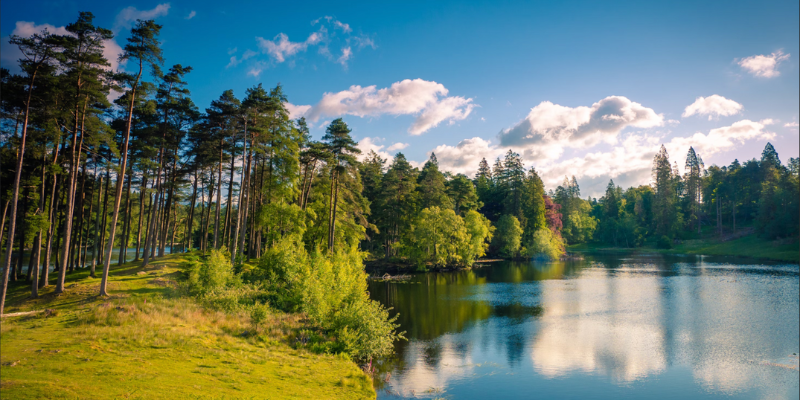
Photo Credit: Tarn Hows / Jonny Gios
8. Fell Foot Park
A hidden gem in the southern Lakes, with plenty of green space and picnic areas to choose from. This charming park is situated on the shores of Lake Windermere and offers a variety of activities, from boating to outdoor games. You can spread out your picnic blanket by the water's edge and watch the boats go by, or take a walk around the park to explore its many attractions. With its easy access and family-friendly amenities, Fell Foot Park is a perfect spot for a day out with the whole family.
9. Castle Howe & Bowling Fell
Let's uncover Kendal's forgotten castle. Bowling Fell, once the site of Kendal's first castle, still holds remnants of the wooden motte and bailey, now known as Castle Howe. The location of this monument offers excellent views of the Kendal skyline—simply the perfect accompaniment to a summer picnic. So grab your blanket, your sense of history, and your appetite!

Photo Credit: Tobias Keller
10. Loweswater
The often-forgotten beauty of Loweswater is perfect for a spot of lunch. This western gem might be quieter than its counterparts, but it certainly doesn't lack in the views department. Holme Wood, located on the lake's southwestern edge, offers plenty of places to settle down and indulge in your outdoor feast. And don't worry, the walk won't take you ages, so you can savour every bite of your picnic goodies without any unnecessary hiking fatigue.
Whether you're looking for peace and quiet or adventure and activities, there's a spot for everyone in this beautiful corner of England. So grab your picnic basket, gather your flock, and head out for a day of fun and adventure in the Lakes.
Featured Product
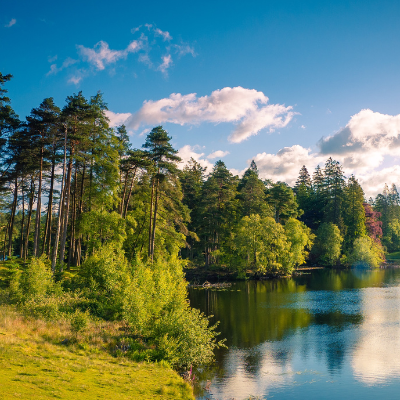
If you're looking for the perfect day out, then look no further than a Lake District picnic. Whether you're planning a family day out, a romantic date, or a solo adventure, we've got ewe covered with our top tips for the perfect picnic in The Lakes.
-
Choose the Perfect Spot
The first step in planning the perfect Lake District picnic is to find the best spot. With so many picturesque locations to choose from, it can be hard to decide! You could head to the shores of Lake Windermere for a classic Lakeside view, or explore the hidden gems of Buttermere or Derwentwater.
Just make sure you choose a spot that is easily accessible, has plenty of space for your picnic blanket and has a stunning view to gaze at while you tuck into your food.
Herdy’s top 5 picnic spots:
Castlerigg Stone Circle - Set against a dramatic mountain backdrop, Castlerigg Stone Circle near Keswick makes the perfect stop for a spot of lunch. There is a small car park at the stone circle and it’s possible to walk from Keswick if you fancy a stroll.
Stagshaw Gardens - Created by the National Trust in 1957, the gardens feature an array of b-ewe-tiful flowers, a babbling stream and secluded benches dotted along the way to enjoy your picnic.
Rydal Water - If you're looking for a secluded spot for your picnic, Rydal Water is the place to be. You can spread out your picnic blanket by the water's edge and watch the world go by.
Derwentwater - One of the most popular lakes in the Lake District, and for good reason. With its dramatic scenery and stunning views, it provides the perfect setting for a picnic with a view.
Buttermere - This peaceful spot is perfect for a picnic, with its tranquil surroundings, Buttermere is a popular spot for hikers and walkers looking for a peaceful place to enjoy a spot of lunch.
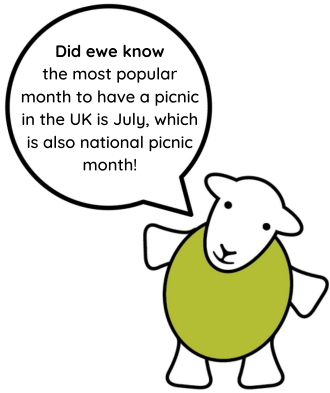
-
Plan Your Menu
Next up, it's time to plan your picnic menu. Whether you're a fan of classic picnic foods like sandwiches and sausage rolls or you want to get creative with your dishes, make sure you choose foods that are easy to transport.
Herdy’s Adventure snack boxes are the perfect place to keep all your snacks fresh until lunchtime, and a Herdy food flask is ideal for keeping hot dishes hot and cold food cold.
We recommend packing a mixture of savoury and sweet treats, such as a classic quiche or some tasty cheese and crackers and no picnic would be complete without some delicious Herdy shortbread.
-
Pack the Perfect Picnic Hamper
No picnic is complete without the perfect hamper. Choose a hamper that is sturdy and easy to carry, with plenty of space for all your food and drink.
And don't forget to pack some essential picnic items, such as a picnic blanket, plates, cutlery, napkins, and how about a Herdy Line Chopping Board to display all your tasty treats? If you're feeling fancy, you could even bring along some glasses and a bottle of fizz to toast your perfect day out.
-
Don't Forget the Entertainment
While the stunning scenery of the Lake District is entertainment in itself, it's always good to have some additional entertainment options to keep you and your flock occupied. Bring along a deck of cards, a frisbee, or a book to read while you relax and soak up the views.
If you're planning a family picnic, pack some games or toys to keep the kids entertained. A game of rounders or a scavenger hunt could be the perfect way to keep them active and engaged while you enjoy a peaceful picnic.
If you're venturing up into the fells, you may be lucky enough to spot some native Herdwick sheep, just be careful they don't pinch your sandwiches!
-
Embrace the Great Outdoors
Finally, the most important tip for the perfect Lake District picnic is to embrace the great outdoors! The Lakes are renowned for their stunning scenery, and a picnic is the perfect way to soak it all in. Take the time to explore your chosen location, go for a walk, paddle in the lake, or pop into one of our four Lake District Herdy stores.
With a little planning and preparation, you can create the perfect day out for you and your flock. So why not pack up your picnic hamper and head out for a day of fun, food and memories in the beautiful Lake District?

FEATURED PRODUCTS
The Lake District is known for many things, Wordsworth, gingerbread, Beatrix Potter, but most importantly, Herdwick sheep. You can find Herdwicks roaming the hills of the Lakes in the months of December to April when they spend most of their time grazing on the fells. They are fully equipt to withstand Cumbria’s notorious wild winter weather, at heights of over 3000 feet.
There are numerous Herdwick hotspots in the Cumbrian countryside, perfect for scenic walks where you can be surrounded by fluffy friends. Here are our top 5 walks where you can take in both the beauty of the Lakes and meet some Herdwicks along the way.
Old Man of Coniston
Standing at 2,632ft high, the Old Man of Coniston is the highest point in Cumbria, with views as far as Morecambe Bay and Blackpool Tower. Despite the fell’s dizzying heights, don’t be surprised if you see a flock or two of Herdwicks hanging around. If you’re after a walk where you can see the hills of the Lakes from the literal highest point, the Coniston Circular Walk is the one for you.
Even though the route may be slightly challenging because it involves some climbing, it’ll certainly be worth it for the scenery! En route, you'll get stunning panoramic views of the hills surrounding Coniston, such as Black Combe and The Pennines. This walk covers a distance of 10.5km and will take around 4 hours. After you’ve completed the walk, an ice cream van is often stationed in Walna Scar car park (the recommended place to park for this walk). So you can treat you and your flock to a coffee or ice cream!
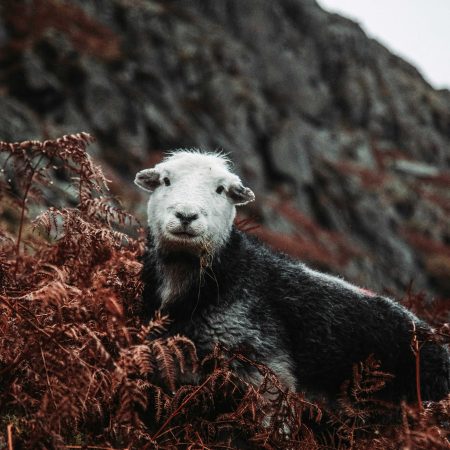
Photo Credit / Chandler Media
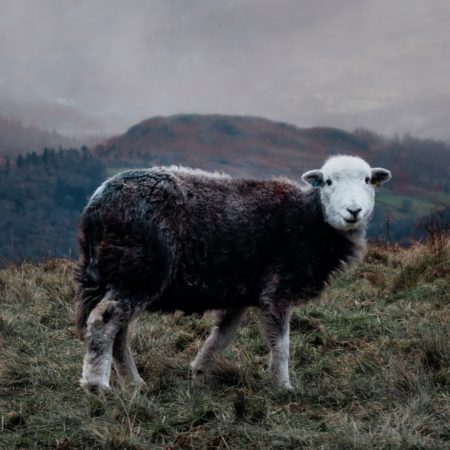
Photo Credit / Sophie Grieve-Williams
Rosthwaite Circular Walk & Millican Dalton’s Cave
This walk goes past streams, woods and a Herdwick farm! A relaxing jaunt, this route is circular, starting at Rosthwaite, going past Yew Tree Farm, Castle Crag, to Millican Dalton’s cave and then along the b-ewe-tiful Borrowdale Valley riverside. Although this route is flatter, do not fret if you are an avid climber, as you will get the chance to climb the Castle Crag summit along the way.
In 1940, Yew Tree Farm was bought by Beatrix Potter, a famous Herdwick fan who even kept and bred her own award-winning flock. The farm was featured in the 2006 film ‘Miss Potter’, starring Renee Zellweger! Today, Yew Tree Farm is a working farm, still specialising in the breeding of Herdwick sheep, meaning that you can find plenty of them roaming the grounds.
Haystacks, Buttermere
On this route, you’ll see a number of stunning waterfalls and catch views of Gable Crag and Warnscale Beck. Even better, Herdwicks are known to graze around Haystack hill.
The Haystacks Circular walk takes you around the Buttermere Fells. At just under 5 miles long, you should allow yourself 3-4 hours to complete it. Begin your walk at Gatesgrath Car Park, alternatively, you can get the 77 or 77A bus from Keswick, then follow the path towards Warnscale Bottom for around an hour. After this, you'll be taken up to Warnscale Bothy, passing Warnscale Beck. Go around Green Crag, and then finally you will reach Haystacks.
If you're looking for even more of an adventure, there are opportunities to detour along the route. Either to explore the crystal-clear plunge pools or to look around the mysterious Warnscale Head Bothy. A shelter thought to have been originally built in the 1750s by an artist dubbed as the ‘Borrowdale Banksy’.
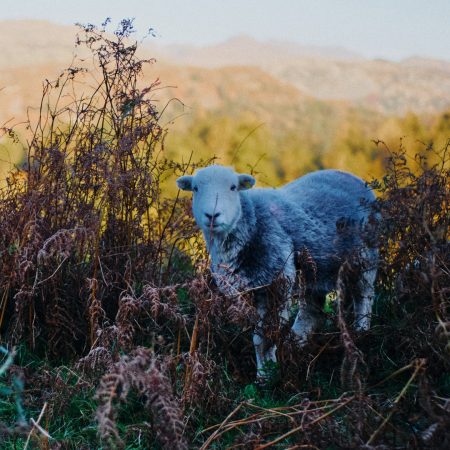
Photo Credit / Ian Cylkowski
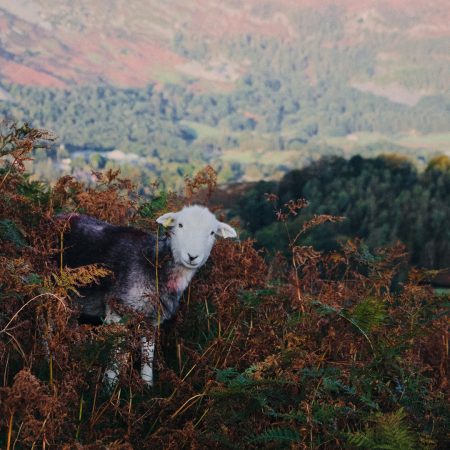
Photo Credit / Ian Cylkowski
Wastwater, Nether Wasdale
If you want to meet some Herdwicks around the Nether Wasdale area, Church Stile Farm is a great place to start. Even better for you avid walkers, there are trails where, not only will you see plenty of Herdwicks, but also beautiful lakes and forestry.
The Church Stile Farm to Wastwater trail takes approximately 2.5 hours and spans a distance of 6.8km. Begin your route at Church Stile Farm, a traditional Lake District farm, home to around 700 Herdwick ewes located at the foot of the Screes mountain range. Then, you’ll walk through Low Wood forest, where you’ll be guaranteed to see plenty of greenery. However, wear sensible footwear as Low Wood is known to get boggy! After this, you’ll arrive at Wastewater Lake, where you’ll see stunning views of the Lake District landscape.
If you fancy a pint or a Sunday roast after your walk, the highly-rated Screes Inn is just 2 minutes away from Church Stile Farm. There are many other great pubs dotted around Nether Wasdale too!
Eskdale
Eskdale is a particularly iconic place for Herdwicks as it is home to the oldest, premier show for Herdwicks, and don’t be surprised if you see a f-ewe of them dotted around the hills nearby!
If you want to go and see the site of the historic show and also, hopefully, catch a glimpse of some Herdwicks, you could take the Eskdale Valley to Boot trail. On this walk, you will wander along the River Esk via the Doctor Bridge and Jubilee Bridge, where you’ll see idyllic views along the Hardknott Pass and Brotherilkeld. The trail is 6.25 miles and will take around 3 hours.
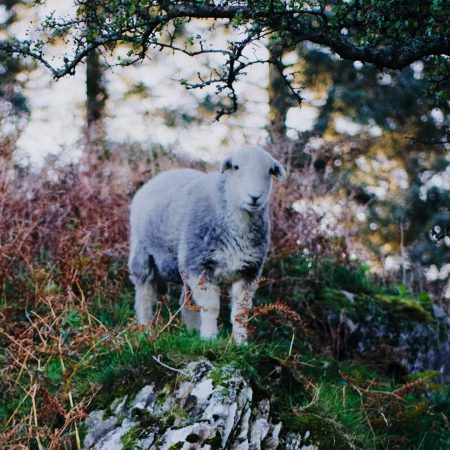
Photo Credit / Ian Cylkowski
Remember to always check the weather before you venture out into The Lakes
The Lake District Weather Line gives daily weather updates to help you plan your trip. They have also released their top 10 tips to stay safe on the fells this winter.
- Check out the Weatherline forecast. Where available, check a ground conditions report. Take the advice on board
- Choose a route suitable for the conditions, your equipment and your ability. If you are unsure, lower your sights
- Do not overestimate your ability, know when to turn back
- Carry enough kit to look after yourself if something goes wrong, or the weather changes
- Always carry a map and compass – know how to use them. Do not rely on a GPS alone
- Take a spare hat and gloves. They will get wet and may blow away
- In winter conditions take an ice axe and crampons - know how to use them
- Goggles are essential when snow and wind combine
- In winter in the snow, wear four-season stiffened boots which are compatible with your crampons
- If in doubt – turn back
P.S. All of the above walks are dog-friendly, however, remember if there is livestock roaming free, keep your dog on the lead.

